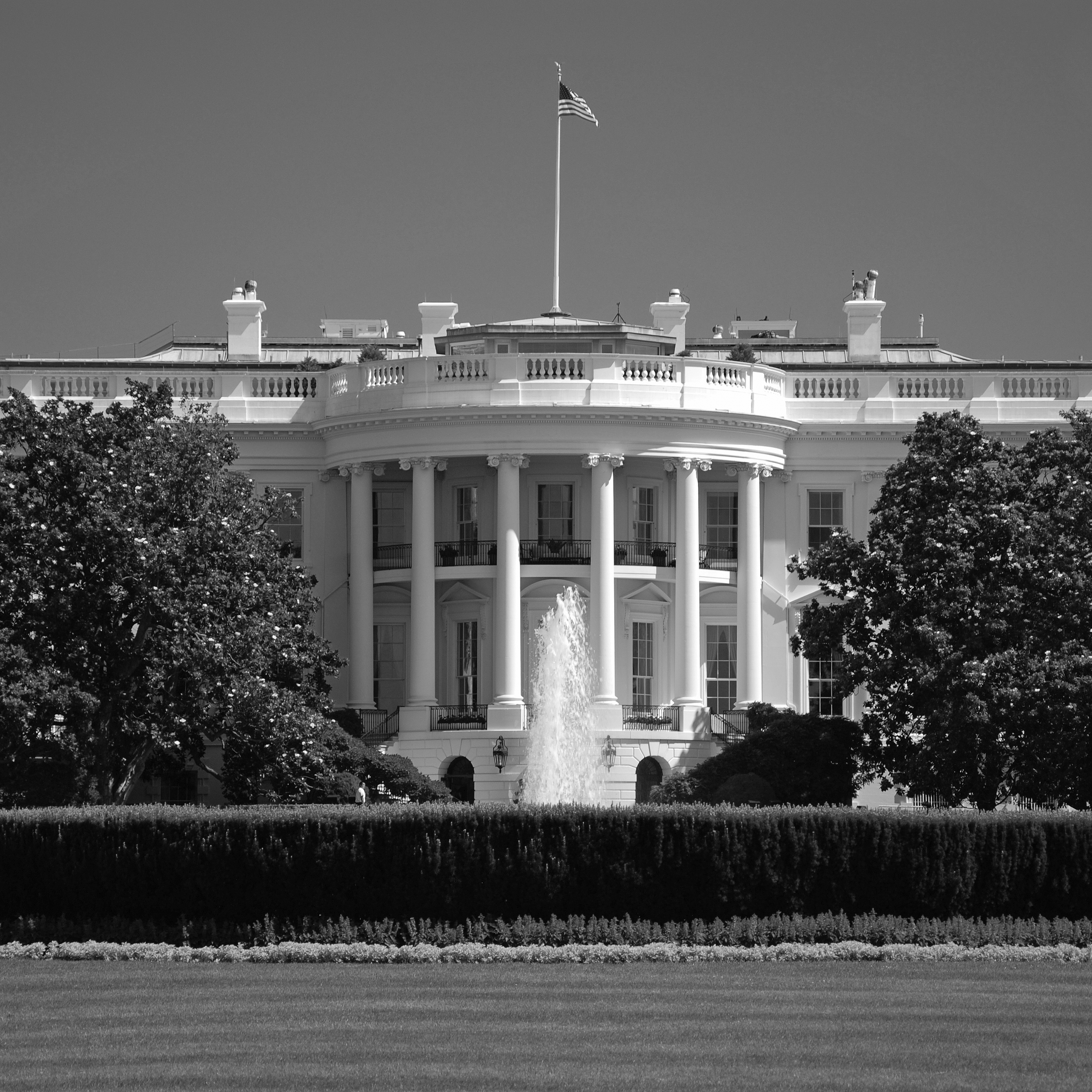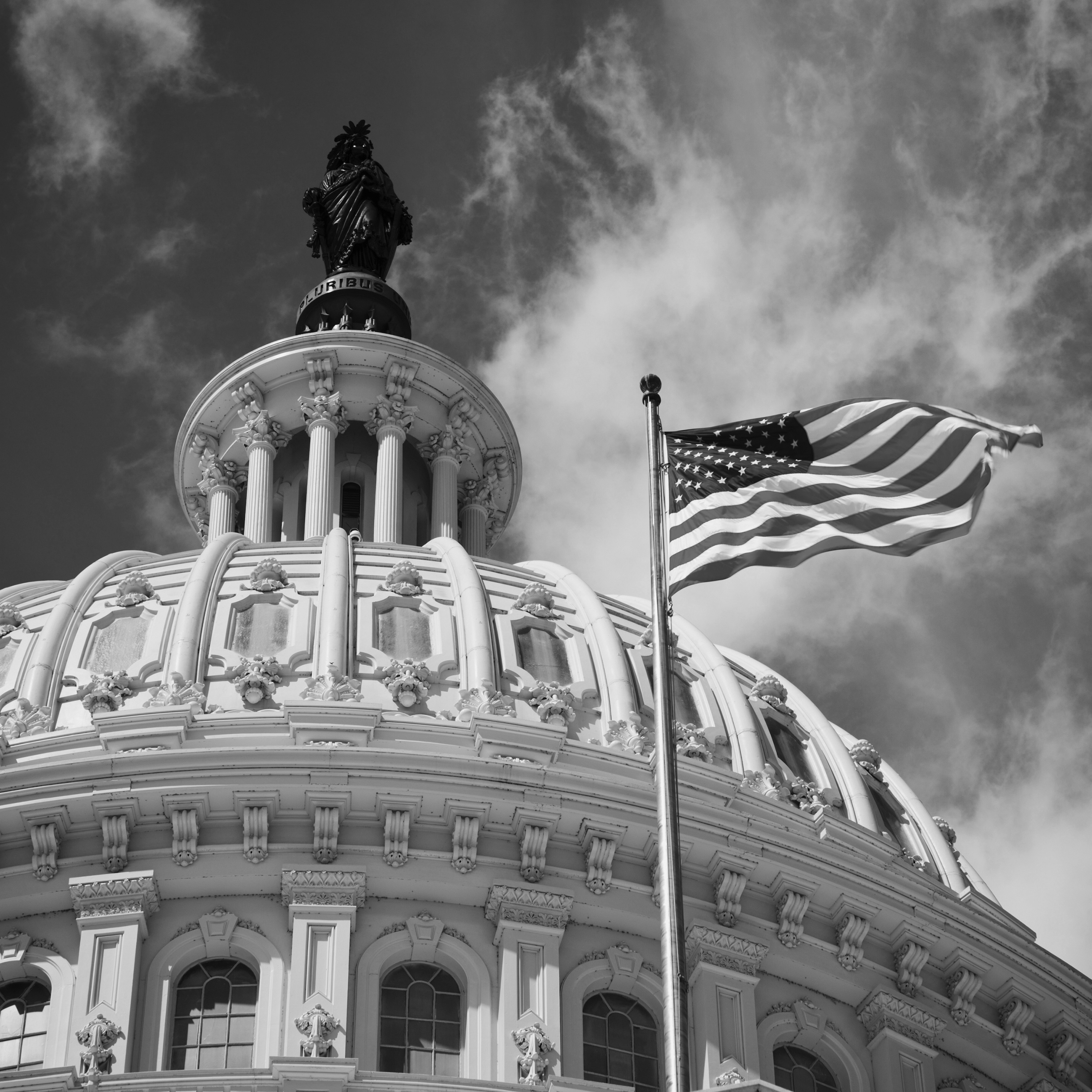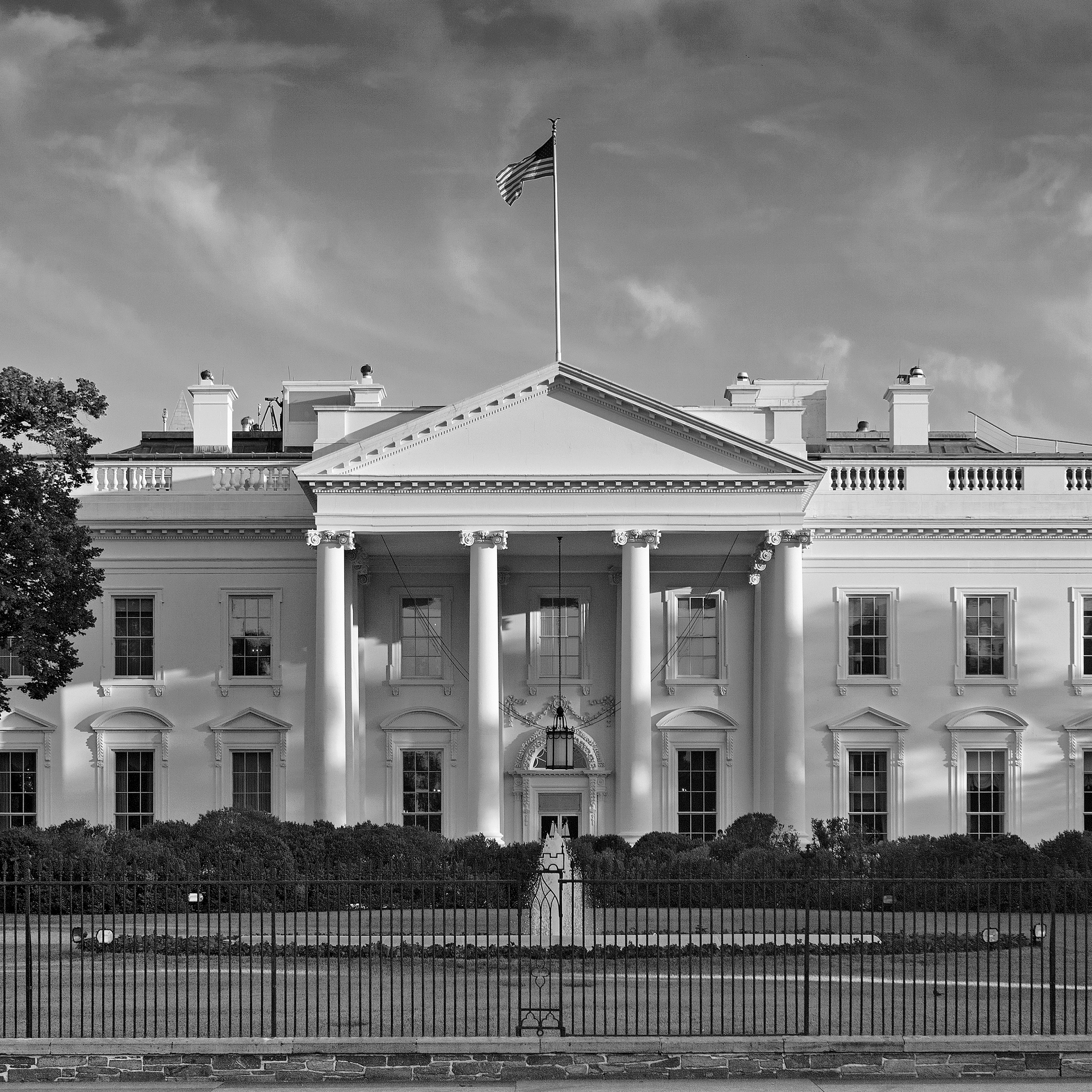Policy Pulse
Critical Insights and Key Takeaways
Following the 2024 US Elections

Akin’s policy hub, crafted by members of our bipartisan lobbying & public policy, regulatory and litigation practices, is your go-to resource for insights, analysis and practical political tools to keep you and your businesses manage the evolving landscape on Capitol Hill and in the White House.
Dive deeper into the policy outlook for the 119th Congress and Trump administration below.
Outlook for the 119th Congress and Trump Administration
Download American Indian Law & Policy Pulse Here
Key Takeaways
- Expect changes to political and career service employees at the agencies, which will impact current and pending Tribal projects, especially those involving highly specialized areas.
- In addition to the anticipated turnover in political officials in the normal course of the political transition, President Trump has promised a government shake up, including among others the potential relocation of certain agency headquarters, reassignment of career service employees and elimination of certain agency initiatives like diversity, equity & inclusion programs.
- Transition delays, including as part of the political appointment process, would not only affect the agency areas dependent on the key appointees but cause potential inertia among lower visibility agencies and subareas.
- Changes to career service employees, especially efforts to clear the way for the Trump administration’s priorities, may result in key turnover with an impact on highly specialized subareas in direct conflict with the priorities of the Trump administration, especially with regards to land resource issues and climate change initiatives housed within the Bureau of Land Management and Reclamation.
- Such changes among career services employees would be significant for tribes, as many of the current and ongoing priorities adopted by the agencies, even ancillary initiatives, would be stymied by a lack of such employees and support to focus on their current projects and programs.
Additional Insights
- President Trump may continue to support the Tribal-related policies that his administration initiated and championed during his first Presidency.
- Specific policy priorities and goals remain unclear, but President Trump’s penchant for loyalty is likely to lead to the renewal of political appointment relationships with familiar Republican Tribal advocates and officials at the agencies.
- This would also include continuing efforts and support for programs and initiatives that were started and supported during the first Trump administration, for example the groundwork and implementation of the Section 105(l) lease program, investment in water resources and negotiations related to addressing drought in the West, efforts to address crime and Tribal justice oversight over Tribal lands and streamlined processes for oil & gas development including on Tribal lands.
- The de-prioritization of certain federal agency priorities in favor of state management may also result in cuts to Tribal-specific agency areas that expanded during the Biden administration in furtherance of Biden-specific Tribal consultation and executive orders.
- Congress is likely to focus on Tribal priorities that fit in with larger congressional priorities such as tax, the reauthorization of the Farm Bill and the reauthorization of the federal surface transportation programs.
- There also may be a redirection of federal resources away from Indian Country priorities, either through congressional action, or through an adjustment of federal investment priorities established through the Justice40 Initiative.
Contributors: Jason Hauter, Don Pongrace, Katie Brossy, Denise Desiderio, Jenny Patten Magallanes
Download American Indian Law & Policy Pulse Here
Key Takeaways
- Expect changes to political and career service employees at the agencies, which will impact current and pending Tribal projects, especially those involving highly specialized areas.
- In addition to the anticipated turnover in political officials in the normal course of the political transition, President Trump has promised a government shake up, including among others the potential relocation of certain agency headquarters, reassignment of career service employees and elimination of certain agency initiatives like diversity, equity & inclusion programs.
- Transition delays, including as part of the political appointment process, would not only affect the agency areas dependent on the key appointees but cause potential inertia among lower visibility agencies and subareas.
- Changes to career service employees, especially efforts to clear the way for the Trump administration’s priorities, may result in key turnover with an impact on highly specialized subareas in direct conflict with the priorities of the Trump administration, especially with regards to land resource issues and climate change initiatives housed within the Bureau of Land Management and Reclamation.
- Such changes among career services employees would be significant for tribes, as many of the current and ongoing priorities adopted by the agencies, even ancillary initiatives, would be stymied by a lack of such employees and support to focus on their current projects and programs.
Additional Insights
- President Trump may continue to support the Tribal-related policies that his administration initiated and championed during his first Presidency.
- Specific policy priorities and goals remain unclear, but President Trump’s penchant for loyalty is likely to lead to the renewal of political appointment relationships with familiar Republican Tribal advocates and officials at the agencies.
- This would also include continuing efforts and support for programs and initiatives that were started and supported during the first Trump administration, for example the groundwork and implementation of the Section 105(l) lease program, investment in water resources and negotiations related to addressing drought in the West, efforts to address crime and Tribal justice oversight over Tribal lands and streamlined processes for oil & gas development including on Tribal lands.
- The de-prioritization of certain federal agency priorities in favor of state management may also result in cuts to Tribal-specific agency areas that expanded during the Biden administration in furtherance of Biden-specific Tribal consultation and executive orders.
- Congress is likely to focus on Tribal priorities that fit in with larger congressional priorities such as tax, the reauthorization of the Farm Bill and the reauthorization of the federal surface transportation programs.
- There also may be a redirection of federal resources away from Indian Country priorities, either through congressional action, or through an adjustment of federal investment priorities established through the Justice40 Initiative.
Contributors: Jason Hauter, Don Pongrace, Katie Brossy, Denise Desiderio, Jenny Patten Magallanes
Download Appropriations Pulse Here
Key Takeaways
- Negotiations in 2025 to increase or suspend the debt ceiling could result in new budget and appropriations limits for the next congress and administration. Annual discretionary appropriations limits may be revised relative to the 1 percent increase set by the Fiscal Responsibility Act of 2023. Expect Republicans to push for a decrease in nondefense discretionary spending.
- With slim GOP majorities in the House and Senate, expect it will remain difficult for Congress to pass a budget resolution and discretionary spending bills on time through regular order. President Trump’s stated pledge to reform the executive branch may further complicate the appropriations process. Multi-month delays in appropriations are likely. Temporary shutdowns and across-the-board cuts are possible.
- Unified GOP control could mean an end to earmarks. Bill and report language will continue to play a key role in shaping agency spending and policy.
Additional Insights
- In 2023, Congress suspended the national debt limit, which was reinstated automatically on January 2, 2025. A default could occur in early- to mid-2025 absent an agreement. As in the past, any debt ceiling agreement is likely to include new restrictions on future spending, particularly nondefense discretionary appropriations.
- Congress must have met certain deadlines and completed the annual budget process before October 1, 2024. However, given recent precedent and the possibility of punting the fiscal year (FY) 2025 funding decisions to the new Congress, expect missed deadlines and delays in future budget processes to continue in the 119th Congress.
- A unified GOP-controlled Congress may seek to reinstate an earmark ban. A majority of Senate Republicans complied with a conference-wide ban in the 118th, and renewed focus on the national debt in the 119th may spur enough political pressure to reinstate a ban. However, President Trump previously supported earmarks as a means of facilitating the legislative process, and many House Republicans historically skeptical of earmarks have increasingly embraced them as a tool to address local infrastructure needs, economic development and other community priorities.
- Irrespective of earmark ban prospects, annual appropriation bills in the 119th Congress are likely to continue to be among the few major, bipartisan bills enacted into law. Consequently, legislative text and report language in appropriation bills will continue to play an influential role in federal agency funding and policy.
Contributors: Charlie Johnson, Ed Pagano, Sam Olswanger, Darren Benjamin
Download Appropriations Pulse Here
Key Takeaways
- Negotiations in 2025 to increase or suspend the debt ceiling could result in new budget and appropriations limits for the next congress and administration. Annual discretionary appropriations limits may be revised relative to the 1 percent increase set by the Fiscal Responsibility Act of 2023. Expect Republicans to push for a decrease in nondefense discretionary spending.
- With slim GOP majorities in the House and Senate, expect it will remain difficult for Congress to pass a budget resolution and discretionary spending bills on time through regular order. President Trump’s stated pledge to reform the executive branch may further complicate the appropriations process. Multi-month delays in appropriations are likely. Temporary shutdowns and across-the-board cuts are possible.
- Unified GOP control could mean an end to earmarks. Bill and report language will continue to play a key role in shaping agency spending and policy.
Additional Insights
- In 2023, Congress suspended the national debt limit, which was reinstated automatically on January 2, 2025. A default could occur in early- to mid-2025 absent an agreement. As in the past, any debt ceiling agreement is likely to include new restrictions on future spending, particularly nondefense discretionary appropriations.
- Congress must have met certain deadlines and completed the annual budget process before October 1, 2024. However, given recent precedent and the possibility of punting the fiscal year (FY) 2025 funding decisions to the new Congress, expect missed deadlines and delays in future budget processes to continue in the 119th Congress.
- A unified GOP-controlled Congress may seek to reinstate an earmark ban. A majority of Senate Republicans complied with a conference-wide ban in the 118th, and renewed focus on the national debt in the 119th may spur enough political pressure to reinstate a ban. However, President Trump previously supported earmarks as a means of facilitating the legislative process, and many House Republicans historically skeptical of earmarks have increasingly embraced them as a tool to address local infrastructure needs, economic development and other community priorities.
- Irrespective of earmark ban prospects, annual appropriation bills in the 119th Congress are likely to continue to be among the few major, bipartisan bills enacted into law. Consequently, legislative text and report language in appropriation bills will continue to play an influential role in federal agency funding and policy.
Contributors: Charlie Johnson, Ed Pagano, Sam Olswanger, Darren Benjamin
Download Congressional Investigations Pulse Here
Key Takeaways
- With the GOP now in control of the executive branch, the Senate and the House, Republicans have gained Senate subpoena power and the ability to direct that chamber’s investigations and oversight, while retaining these powers in the House for another session of Congress.
- Although some early oversight and investigations will likely focus on obtaining legacy information from executive branch agencies to support further scrutiny of Biden Administration initiatives, expect much of Congress’s investigative focus and resources to be directed mainly outside of the federal government, including inquiries targeting private sector interests.
- Particularly given the populist wave and the winning Republican agenda, expect this to dictate policy and related investigative targets. As the House demonstrated in the last Congress, this is not your parents’ Republican party, and private companies and interests are squarely in the crosshairs.
- Across the board, there will likely be continued focus on such topics as health care; consumer protection; technology and privacy issues; certain perceived “woke” issues like diversity, equity & inclusion (DEI) and environmental, social & governance (ESG) initiatives; environmental groups and nonprofits opposing the administration’s energy policies; allegations of censorship and inappropriate information sharing with the government; and emerging economic and security threats posed by foreign adversaries like China and others.
Additional Insights
- Oversight During a Unified GOP Government. As we’ve seen in recent sessions of Congress, key GOP committees have not shied away from investigating Corporate America—particularly on issues with heightened messaging/political significance. For example, Republican committee chairs will likely pursue an investigations and oversight agenda that they have steadily previewed during the 118th Congress, including further inquiries focused on issues related to immigration and border security, allegations of censorship advanced against leading technology companies, and scrutiny of ESG-aligned business practices, as well as inquiries concerning the origins of the COVID-19 pandemic and related government action.
- Democratic Agenda. Although Democrats lack subpoena power in the House and Senate, minority-led investigations will endeavor to “counter-program” the GOP’s legislative and political agendas, seeking to leverage media coverage and reputational risks in broadly scrutinizing corporate conduct, including investigations targeting individuals and entities perceived to be aligned with the Trump administration. So-called “minority inquiries” by congressional Democrats may focus on issues ranging from climate change to antitrust, as well as financial services and investment funds—especially on consumer-facing issues such as housing affordability. Like during the period following President Trump’s initial election in 2016, although Democrats will lack the authority to compel parties to cooperate, such inquiries will likely preview the party’s oversight objectives should they re-take the House or Senate after the 2026 midterms.
Contributors: Karen Christian, Thomas Moyer, Rafi Prober
Download Congressional Investigations Pulse Here
Key Takeaways
- With the GOP now in control of the executive branch, the Senate and the House, Republicans have gained Senate subpoena power and the ability to direct that chamber’s investigations and oversight, while retaining these powers in the House for another session of Congress.
- Although some early oversight and investigations will likely focus on obtaining legacy information from executive branch agencies to support further scrutiny of Biden Administration initiatives, expect much of Congress’s investigative focus and resources to be directed mainly outside of the federal government, including inquiries targeting private sector interests.
- Particularly given the populist wave and the winning Republican agenda, expect this to dictate policy and related investigative targets. As the House demonstrated in the last Congress, this is not your parents’ Republican party, and private companies and interests are squarely in the crosshairs.
- Across the board, there will likely be continued focus on such topics as health care; consumer protection; technology and privacy issues; certain perceived “woke” issues like diversity, equity & inclusion (DEI) and environmental, social & governance (ESG) initiatives; environmental groups and nonprofits opposing the administration’s energy policies; allegations of censorship and inappropriate information sharing with the government; and emerging economic and security threats posed by foreign adversaries like China and others.
Additional Insights
- Oversight During a Unified GOP Government. As we’ve seen in recent sessions of Congress, key GOP committees have not shied away from investigating Corporate America—particularly on issues with heightened messaging/political significance. For example, Republican committee chairs will likely pursue an investigations and oversight agenda that they have steadily previewed during the 118th Congress, including further inquiries focused on issues related to immigration and border security, allegations of censorship advanced against leading technology companies, and scrutiny of ESG-aligned business practices, as well as inquiries concerning the origins of the COVID-19 pandemic and related government action.
- Democratic Agenda. Although Democrats lack subpoena power in the House and Senate, minority-led investigations will endeavor to “counter-program” the GOP’s legislative and political agendas, seeking to leverage media coverage and reputational risks in broadly scrutinizing corporate conduct, including investigations targeting individuals and entities perceived to be aligned with the Trump administration. So-called “minority inquiries” by congressional Democrats may focus on issues ranging from climate change to antitrust, as well as financial services and investment funds—especially on consumer-facing issues such as housing affordability. Like during the period following President Trump’s initial election in 2016, although Democrats will lack the authority to compel parties to cooperate, such inquiries will likely preview the party’s oversight objectives should they re-take the House or Senate after the 2026 midterms.
Contributors: Karen Christian, Thomas Moyer, Rafi Prober
Download Energy & Environment Pulse Here
Key Takeaways
- A second Trump administration will review and evaluate the potential to modify, if not repeal many of the Biden administration’s actions on climate change and the environment. However, President Trump will need strong support in Congress to repeal or materially amend the Inflation Reduction Act of 2022 (IRA) which expanded and extended federal tax credits for the deployment of clean energy technologies and manufacturing and reallocating those funds to pay for new tax cuts.
- Anticipate a repeal and replace of the power plant rule, new source performance standards for oil & gas and emissions standards for greenhouse gas (GHG) and criteria pollutants from mobile sources, greatly impeding the Biden administration’s electrification efforts.
- Executive orders will reinstate liquefied natural gas (LNG) export authorizations, expand oil & gas development on federal lands, withdraw the U.S. from the Paris Agreement and loosen restrictions on remaining IRA energy tax credits to promote hydrocarbons development.
Additional Insights
- Since Republicans will control the House, a top priority for the party will be to use the budget reconciliation process to repeal some or all of the IRA provisions related to energy tax credits and reallocate funds toward new tax cuts. Although this aligns with broader Republican priorities, some party members, especially those from red-leaning districts where the IRA has spurred job growth and attracted multibillion-dollar investments, will likely resist its complete repeal and, if red-leaning districts could face job losses as a result, you can expect President Trump to listen. Elements of the IRA which may garner broader support include tax credits for established clean energy technologies like solar, onshore wind and energy storage as well as the advanced manufacturing production tax credits under Section 45X with respect to the manufacturing of qualifying solar, wind and battery components, inverters, critical minerals and carbon capture, utilization & storage (CCUS).
- Expect President Trump to take swift executive action to reverse key Biden administration policies, including lifting the Department of Energy’s (DOE) moratorium on LNG export authorizations; withdrawing the U.S. from the Paris Agreement once more; loosening of restrictions on applicable tax credits to qualify more hydrocarbon-based projects; and expanding oil & gas development on federal lands via the Bureau of Land Management.
- On the judicial front, the recent Supreme Court’s Loper Bright decision opens the door for the United States to drop its defense of agency actions that the Trump administration believe do not best interpret ambiguities or silence in authorizing statutes. Expect the Trump administration to leverage the Supreme Court’s decision to reinterpret environmental regulations, particularly those tied to the Clean Power Plant Rule and motor vehicle emissions standards.
Contributors: Shariff Barakat, Ike Emehelu, Matt Kapinos, Ken Markowitz, Ryan Thompson, Chris Treanor, Vanessa Wilson, Richard Coppola
Download Energy & Environment Pulse Here
Key Takeaways
- A second Trump administration will review and evaluate the potential to modify, if not repeal many of the Biden administration’s actions on climate change and the environment. However, President Trump will need strong support in Congress to repeal or materially amend the Inflation Reduction Act of 2022 (IRA) which expanded and extended federal tax credits for the deployment of clean energy technologies and manufacturing and reallocating those funds to pay for new tax cuts.
- Anticipate a repeal and replace of the power plant rule, new source performance standards for oil & gas and emissions standards for greenhouse gas (GHG) and criteria pollutants from mobile sources, greatly impeding the Biden administration’s electrification efforts.
- Executive orders will reinstate liquefied natural gas (LNG) export authorizations, expand oil & gas development on federal lands, withdraw the U.S. from the Paris Agreement and loosen restrictions on remaining IRA energy tax credits to promote hydrocarbons development.
Additional Insights
- Since Republicans will control the House, a top priority for the party will be to use the budget reconciliation process to repeal some or all of the IRA provisions related to energy tax credits and reallocate funds toward new tax cuts. Although this aligns with broader Republican priorities, some party members, especially those from red-leaning districts where the IRA has spurred job growth and attracted multibillion-dollar investments, will likely resist its complete repeal and, if red-leaning districts could face job losses as a result, you can expect President Trump to listen. Elements of the IRA which may garner broader support include tax credits for established clean energy technologies like solar, onshore wind and energy storage as well as the advanced manufacturing production tax credits under Section 45X with respect to the manufacturing of qualifying solar, wind and battery components, inverters, critical minerals and carbon capture, utilization & storage (CCUS).
- Expect President Trump to take swift executive action to reverse key Biden administration policies, including lifting the Department of Energy’s (DOE) moratorium on LNG export authorizations; withdrawing the U.S. from the Paris Agreement once more; loosening of restrictions on applicable tax credits to qualify more hydrocarbon-based projects; and expanding oil & gas development on federal lands via the Bureau of Land Management.
- On the judicial front, the recent Supreme Court’s Loper Bright decision opens the door for the United States to drop its defense of agency actions that the Trump administration believe do not best interpret ambiguities or silence in authorizing statutes. Expect the Trump administration to leverage the Supreme Court’s decision to reinterpret environmental regulations, particularly those tied to the Clean Power Plant Rule and motor vehicle emissions standards.
Contributors: Shariff Barakat, Ike Emehelu, Matt Kapinos, Ken Markowitz, Ryan Thompson, Chris Treanor, Vanessa Wilson, Richard Coppola
Download Financial Services Pulse Here
Key Takeaways
- President Trump will likely prioritize regulatory reform, including rolling back regulations enacted as part of the Dodd-Frank Act, in order to reduce what Republicans have described as burdensome compliance requirements on banks and other financial institutions. These reforms aim to increase lending and capital access, ultimately driving economic growth.
- Similarly, outgoing House Financial Services Committee (HFSC) Chairman Patrick McHenry (R-NC) has prioritized capital markets reform, and Senate Banking Committee (SBC) Ranking Member Tim Scott (R-SC), who is in line to chair the Committee now that Republicans have the majority, has suggested this will continue to be a priority in the next Congress. The intent is to increase competitiveness and accessibility in U.S. markets by modernizing regulations to promote capital formation, improving access to public markets for smaller companies and reducing the regulatory burdens that stifle innovation and growth.
- With a Trump administration, the regulatory environment for digital assets is likely to remain relatively hands-off, with a focus on minimizing government interference in financial innovation, as outlined in the Republican Party platform. The Trump administration will support the effort by Republicans in Congress to pass a broader market structure bill for the industry and legislation to establish a regulatory framework for stablecoins.
- Republicans have also proposed legislation to expand access to credit-building opportunities, especially for underserved communities. By including nontraditional credit data, such as utility and rental payments, they hope to help individuals without extensive credit histories build their credit scores.
Additional Insights
- Expect President Trump to remove regulators unfavorable to the crypto industry, such as Securities and Exchange Commission (SEC) Chairman Gary Gensler. Chairman Gensler has taken aggressive action against the industry, which Republicans have described as regulating by enforcement.
- Robust capital markets reform will still be tough to deliver even under unified Republican. McHenry’s Expanding Access to Capital Act (H.R. 2799) passed in the House without a single Democrat voting for it, and Scott’s Empowering Main Street in America Act (S. 5139) has only Republican cosponsors.
- Legislation to expand access to credit-building tools by incorporating nontraditional credit data could be one area for bipartisan support. Both parties see financial inclusion as a means to empower low-income individuals and underserved communities, but there are differences in their preferred approach.
- There is a strong opportunity for Congress to advance digital asset market structure legislation. The House passed a bipartisan market structure bill earlier this year (H.R. 4763), but it stalled in the Senate due to opposition from current SBC Chair Sherrod Brown (D-OH). With a Republican-led House and Senate, the dynamics shift. While Sen. Elizabeth Warren (D-MA), the likely SBC Ranking Member, remains skeptical, efforts to get bipartisan support in the Senate could hinge on Sen. Kirsten Gillibrand (D-NY), who first introduced market structure legislation in 2022 with Sen. Cynthia Lummis (R-WY).
- With Chair McHenry retiring, Reps. Frank Lucas (R-OK), Bill Huizenga (R-MI), Andy Barr (R-KY) and French Hill (R-AR)―listed by seniority―are vying to chair the HFSC. Whoever secures the gavel is expected to work well with Sen. Scott. Additionally, they may have a better chance of advancing bipartisan legislation with HFSC Ranking Member Maxine Waters (D-CA) than Sen. Scott will if Sen. Warren becomes SBC Ranking Member.
Contributors: Sean D’Arcy, Zach Rudisill, Sam Olswanger, Patrick Gaul
Download Financial Services Pulse Here
Key Takeaways
- President Trump will likely prioritize regulatory reform, including rolling back regulations enacted as part of the Dodd-Frank Act, in order to reduce what Republicans have described as burdensome compliance requirements on banks and other financial institutions. These reforms aim to increase lending and capital access, ultimately driving economic growth.
- Similarly, outgoing House Financial Services Committee (HFSC) Chairman Patrick McHenry (R-NC) has prioritized capital markets reform, and Senate Banking Committee (SBC) Ranking Member Tim Scott (R-SC), who is in line to chair the Committee now that Republicans have the majority, has suggested this will continue to be a priority in the next Congress. The intent is to increase competitiveness and accessibility in U.S. markets by modernizing regulations to promote capital formation, improving access to public markets for smaller companies and reducing the regulatory burdens that stifle innovation and growth.
- With a Trump administration, the regulatory environment for digital assets is likely to remain relatively hands-off, with a focus on minimizing government interference in financial innovation, as outlined in the Republican Party platform. The Trump administration will support the effort by Republicans in Congress to pass a broader market structure bill for the industry and legislation to establish a regulatory framework for stablecoins.
- Republicans have also proposed legislation to expand access to credit-building opportunities, especially for underserved communities. By including nontraditional credit data, such as utility and rental payments, they hope to help individuals without extensive credit histories build their credit scores.
Additional Insights
- Expect President Trump to remove regulators unfavorable to the crypto industry, such as Securities and Exchange Commission (SEC) Chairman Gary Gensler. Chairman Gensler has taken aggressive action against the industry, which Republicans have described as regulating by enforcement.
- Robust capital markets reform will still be tough to deliver even under unified Republican. McHenry’s Expanding Access to Capital Act (H.R. 2799) passed in the House without a single Democrat voting for it, and Scott’s Empowering Main Street in America Act (S. 5139) has only Republican cosponsors.
- Legislation to expand access to credit-building tools by incorporating nontraditional credit data could be one area for bipartisan support. Both parties see financial inclusion as a means to empower low-income individuals and underserved communities, but there are differences in their preferred approach.
- There is a strong opportunity for Congress to advance digital asset market structure legislation. The House passed a bipartisan market structure bill earlier this year (H.R. 4763), but it stalled in the Senate due to opposition from current SBC Chair Sherrod Brown (D-OH). With a Republican-led House and Senate, the dynamics shift. While Sen. Elizabeth Warren (D-MA), the likely SBC Ranking Member, remains skeptical, efforts to get bipartisan support in the Senate could hinge on Sen. Kirsten Gillibrand (D-NY), who first introduced market structure legislation in 2022 with Sen. Cynthia Lummis (R-WY).
- With Chair McHenry retiring, Reps. Frank Lucas (R-OK), Bill Huizenga (R-MI), Andy Barr (R-KY) and French Hill (R-AR)―listed by seniority―are vying to chair the HFSC. Whoever secures the gavel is expected to work well with Sen. Scott. Additionally, they may have a better chance of advancing bipartisan legislation with HFSC Ranking Member Maxine Waters (D-CA) than Sen. Scott will if Sen. Warren becomes SBC Ranking Member.
Contributors: Sean D’Arcy, Zach Rudisill, Sam Olswanger, Patrick Gaul
Download Health Care & Life Sciences Pulse Here
Key Takeaways
- It is an increasingly challenging environment to move legislation and this dynamic makes the annual appropriations process even more important as the “power of the purse” is used to shape health care policy.
- A Trump administration may seek to work closely with Congress to shape health policy priorities through budget reconciliation and the annual appropriations process.
- Expect health care issues to feel like déjà vu as the 119th Congress picks up where the 118th leaves off.
- The confirmation hearings for Trump administration appointees will provide additional insight into key health priorities for his second term, but expect Democrat members to focus on oversight to rebuke new actions and scrutinize attempts to roll back or alter Biden-Harris health policies.
- This will be the first administration to establish its regulatory agenda in the wake of the Supreme Court’s decision in Loper Bright.
- Republicans may leverage Loper Bright dynamics in furtherance of a deregulatory agenda.
Additional Insights
- Regulatory Reform. President Trump is expected to once again make regulatory reform a key focus area. In the second Trump administration, regulatory reform is expected to include modernizing regulatory frameworks and decreasing regulatory burdens at the Department of Health and Human Services (HHS), including the Food and Drug Administration (FDA) and Centers for Medicare & Medicaid Services (CMS). This will likely entail unwinding regulations issued during the Biden-Harris administration, such as the nursing home rule regarding minimum staffing levels. President Trump has also pledged that his administration’s health care policy will be influenced by Robert F. Kennedy Jr.’s “Make America Healthy Again” agenda.
- Health Coverage and Access. President Trump has criticized the Affordable Care Act (ACA) and he will likely oppose the extension of enhanced premium subsidies and support the expansion of short-term limited-duration insurance plans. President Trump has supported increasing access to care through regulatory flexibilities, continued access to telehealth and efforts to improve care in rural and underserved communities. In 2017, the Trump administration declared the opioid crisis a public health emergency for the first time; the opioid epidemic will likely be a key area of focus in the second Trump term. President Trump is also expected to issue various pro-life executive orders as he did in his first term.
- Prescription Drug Costs. During his first term, President Trump pursued numerous drug pricing policy reforms, including proposing rules to eliminate pharmaceutical rebates in Part D and establish an international reference pricing system for certain Medicare drugs. Regardless of whether these or similar proposals are revived in his second term, drug pricing is certain to again be a focus as President Trump will navigate implementation of the Inflation Reduction Act’s drug pricing provisions and bipartisan interest in pharmacy benefit manager (PBM) reforms.
- Health Innovation. Ensuring that patients are able to access health care innovations as soon as possible was an area of focus for the Trump administration, including the enactment and implementation of the Right to Try Act and proposing more modern pathways for medical products to reach patients in the Medicare program. President Trump is expected to consider additional streamlining of how patients are able to benefit from medical advances. Artificial intelligence (AI) in health care is expected to be a continued area of interest for Congress and President Trump’s AI policies are likely to focus on supporting innovation in this space.
- Medical Supply Chains. President Trump’s approach to medical supply chains is linked to his “Buy American” focus that, during his first term, involved prioritizing procurement of domestically produced medicines. President Trump has pledged in his second term to pursue a multiyear “national reshoring plan” to reduce U.S. dependence on China, including for essential medical products.
Contributors: Anna Abram, Nate Brown, Kelly Cleary, John Jacob, Jocelyn Wiles, Sean Feely, Kandis McClure
Download Health Care & Life Sciences Pulse Here
Key Takeaways
- It is an increasingly challenging environment to move legislation and this dynamic makes the annual appropriations process even more important as the “power of the purse” is used to shape health care policy.
- A Trump administration may seek to work closely with Congress to shape health policy priorities through budget reconciliation and the annual appropriations process.
- Expect health care issues to feel like déjà vu as the 119th Congress picks up where the 118th leaves off.
- The confirmation hearings for Trump administration appointees will provide additional insight into key health priorities for his second term, but expect Democrat members to focus on oversight to rebuke new actions and scrutinize attempts to roll back or alter Biden-Harris health policies.
- This will be the first administration to establish its regulatory agenda in the wake of the Supreme Court’s decision in Loper Bright.
- Republicans may leverage Loper Bright dynamics in furtherance of a deregulatory agenda.
Additional Insights
- Regulatory Reform. President Trump is expected to once again make regulatory reform a key focus area. In the second Trump administration, regulatory reform is expected to include modernizing regulatory frameworks and decreasing regulatory burdens at the Department of Health and Human Services (HHS), including the Food and Drug Administration (FDA) and Centers for Medicare & Medicaid Services (CMS). This will likely entail unwinding regulations issued during the Biden-Harris administration, such as the nursing home rule regarding minimum staffing levels. President Trump has also pledged that his administration’s health care policy will be influenced by Robert F. Kennedy Jr.’s “Make America Healthy Again” agenda.
- Health Coverage and Access. President Trump has criticized the Affordable Care Act (ACA) and he will likely oppose the extension of enhanced premium subsidies and support the expansion of short-term limited-duration insurance plans. President Trump has supported increasing access to care through regulatory flexibilities, continued access to telehealth and efforts to improve care in rural and underserved communities. In 2017, the Trump administration declared the opioid crisis a public health emergency for the first time; the opioid epidemic will likely be a key area of focus in the second Trump term. President Trump is also expected to issue various pro-life executive orders as he did in his first term.
- Prescription Drug Costs. During his first term, President Trump pursued numerous drug pricing policy reforms, including proposing rules to eliminate pharmaceutical rebates in Part D and establish an international reference pricing system for certain Medicare drugs. Regardless of whether these or similar proposals are revived in his second term, drug pricing is certain to again be a focus as President Trump will navigate implementation of the Inflation Reduction Act’s drug pricing provisions and bipartisan interest in pharmacy benefit manager (PBM) reforms.
- Health Innovation. Ensuring that patients are able to access health care innovations as soon as possible was an area of focus for the Trump administration, including the enactment and implementation of the Right to Try Act and proposing more modern pathways for medical products to reach patients in the Medicare program. President Trump is expected to consider additional streamlining of how patients are able to benefit from medical advances. Artificial intelligence (AI) in health care is expected to be a continued area of interest for Congress and President Trump’s AI policies are likely to focus on supporting innovation in this space.
- Medical Supply Chains. President Trump’s approach to medical supply chains is linked to his “Buy American” focus that, during his first term, involved prioritizing procurement of domestically produced medicines. President Trump has pledged in his second term to pursue a multiyear “national reshoring plan” to reduce U.S. dependence on China, including for essential medical products.
Contributors: Anna Abram, Nate Brown, Kelly Cleary, John Jacob, Jocelyn Wiles, Sean Feely, Kandis McClure
Download Immigration Pulse Here
Key Takeaways
- Expect increased denial rates and processing delays for work visas and other employment-based immigration applications.
- The previous Trump administration implemented policies that significantly increased scrutiny on work visas such as H-1B (specialty occupation visa for professionals), increasing the rate of denials for new H-1B visas from 6 percent to 24 percent. We expect to see a similar change in processing of H-1B visa petitions.
- Visa issuance at consulates abroad is likely to be slowed due to factors such as limited or reduced appointment availability and enhanced vetting of visa applicants. The Trump administration may also seek to limit waivers of in-person visa interviews at consulates, as well as limit appointment availability for third-country national applicants not applying for a visa in their home country. This will lead to longer wait times for visa interviews, increasing already-existing backlogs at consulates abroad, which will delay the arrival of sponsored foreign employees to U.S. companies.
- In-country applicants for green cards are likely to be subject to mandatory interviews at local U.S. Citizenship and Immigration Services (USCIS) offices, which have been largely waived in the past four years. This will lead to lengthy delays in adjudications of all types of applications, including green cards and naturalization applications.
- Work visas could be harder to obtain and may require companies to pay considerably higher wages to their foreign workers.
- In the previous Trump administration, the Department of Labor published a rule that significantly raised the minimum prevailing wages that were required for H-1B visa holders and certain applicants for employment-based permanent residency. The rule was enjoined by the courts and withdrawn by the Biden administration, but we expect it to be reintroduced.
- In the previous Trump administration, the Department of Homeland Security (DHS) published a rule that changed the distribution of H-1B visas in the annual lottery, awarding H-1B visas only to the highest paid employees at U.S. companies. The rule was enjoined by the courts, but we expect it to be reintroduced, even though it is unlikely to become effective in time for the March 2025 lottery.
- The second Trump administration may rescind work authorization for spouses of certain nonimmigrant visa holders (primarily, H-4 spouses), as the previous Trump administration attempted to do. Certain work permits are also eligible for automatic extensions based on a timely filed renewal. If the second Trump administration eliminates this benefit, it would impact foreign workers’ ability to maintain their employment during periods of renewal.
- Student work authorization may be significantly limited or rescinded entirely.
- The Optional Practical Training (OPT) and STEM OPT programs are based on administrative rules which would permit the Trump administration to rescind the programs through the rulemaking process. During the previous Trump administration, DHS proposed a rule that would limit the time that students can remain in the United States, which would impact the ability of students or recent graduates to work pursuant to OPT or STEM OPT.
- A bill drafted by President Trump’s advisor Stephen Miller when he worked as a legislative aide to former Sen. Jeff Sessions (R-AL) would prohibit international students with master’s or bachelor’s degrees from working in the United States in H-1B status without first gaining 10 years of experience in a foreign country, a fundamental change in U.S. immigration policy. Individuals with a Ph.D. from a U.S. university first would need to work two years in another country to be eligible for an H-1B visa. Mr. Miller is expected to be named deputy chief of staff for policy and is likely to once again be in charge of setting U.S. immigration policy in the Trump administration.
- However, during the campaign, President Trump proposed automatic permanent residency for noncitizen graduates of U.S. colleges and universities, including junior colleges. He also expressed support for H-1B work visas in December 2024. Proposals to increase business immigration benefits would require congressional approval, and it is unclear if such legislation may pass a Republican Congress, but it could signal that President Trump’s position on foreign students and work visas has shifted.
- Investigations of U.S. companies hiring undocumented or ineligible foreign workers may increase.
- The Trump administration will likely increase the number of visa fraud investigations, as well as employer audits by the USCIS Fraud Detection and National Security Directorate, which investigates fraud in immigration petitions by U.S. employers.
- President Trump will restart workplace raids, according to incoming “border czar” Tom Homan, with the stated intention of addressing labor and sex trafficking.
- The second Trump administration is expected to be active in I-9 audits and to push for the expanded use of E-Verify, a system intended to prove that employees are eligible to work in the United States, which has also led to some improper denials of eligible workers.
- We also expect the administration to reinstate the USCIS Denaturalization Task Force, which consisted of attorneys reviewing past naturalization cases and reopening them with the goal of stripping naturalized U.S. citizens of their citizenship and removing them from the United States if the Task Force found inconsistencies or other issues in their naturalization applications.
- Expect humanitarian immigration policies to be curtailed.
- President Trump is expected to revoke or terminate humanitarian parole and Temporary Protected Status for most countries, including the United for Ukraine program, parole for Afghan refugees, and parole programs for Central American citizens sponsored by their families in the United States.
- President Trump has stated in the past that it is not his intention to target Dreamers, but that he would focus on deportation of immigrants accused of crimes. Nevertheless, Dreamers’ ability to remain in the United States and continue renewing their work permits may also be impacted as litigation questioning the constitutionality of the Deferred Action for Childhood Arrivals (DACA) program makes its way through the courts. The previous Trump administration terminated the DACA program, which was later upheld by the Supreme Court, but no new applicants have been allowed to apply for work authorization or protection from removal from the United States. The previous Trump administration had also sought a deal with Democrats that would provide a permanent status for DACA recipients in exchange for enhanced border security measures.
- President Trump is expected to significantly reduce the number of refugees that the United States will accept from other countries (in 2020, he reduced the number to 15,000 from the typical 125,000).
- The Trump administration may restrict eligibility for T and U visas for victims of trafficking and serious crimes.
- President Trump has promised to crack down on illegal crossings at the southern border and to increase deportations of undocumented immigrants already living in the United States.
- President Trump will likely act quickly to restore the Migrant Protection Protocols (the “Remain in Mexico” policy) under which immigrants seeking asylum in the United States were required to wait in Mexico for their court hearings.
- President Trump has promised to increase deportations of undocumented immigrants currently in the United States. The administration will likely leverage “expedited removal” processes to remove those undocumented immigrants from the United States. As part of this process, President Trump may attempt to funnel military spending toward border security and mobilize military and local law enforcement to assist in deportations. President Trump has indicated a desire to use the Alien Enemies Act of 1798 to deploy federal troops to assist at the border. He has stated that deportations will begin with those who have been accused of crimes and those with deportation orders from the immigration court.
- President Trump plans to increase the number of border agents by hiring 10,000 new Border Patrol agents and has promised pay raises and bonuses for recruitment and retention purposes.
- President Trump has promised to end sanctuary cities by seeking to eliminate federal funding for those municipalities that refuse to cooperate with Immigration and Customs Enforcement (ICE) in the removal of undocumented immigrants found in their jurisdictions.
- The Trump administration is likely to seek to terminate the Flores settlement that governs the detention of children and families, and to seek to detain all categories of immigrants until their immigration court hearings.
- President Trump has expressed a desire to end birthright citizenship. In one of his campaign videos, he promised to sign an executive order that would instruct agencies to require that any child born in the United States must have at least one parent who is a lawful permanent resident or citizen before the issuance of a passport or social security number. Such an executive order would prohibit the State Department from issuing passports to children whose parents are not U.S. citizens or lawful permanent residents and is likely be challenged in court as directly in conflict with the 14th Amendment of the Constitution.
- Here’s what to expect in the first 100 days.
- Executive order regarding State Department policies on issuance of U.S. passports.
- Changes to the H-1B lottery and prevailing wage requirements.
- Lengthy processing delays and increased rate of requests for evidence and denials in all immigration applications, both at consulates abroad and at USCIS offices in the United States.
- Increased worksite raids and I-9 audits.
- Repeal of executive orders establishing humanitarian parole programs.
- Increased deportations of undocumented immigrants.
Additional Insights
- We expect that the House of Representatives will move swiftly to once again pass legislation similar to the Secure the Border Act of 2023 (H.R. 2 in the 118th Congress). It is unclear if a compromise on border security legislation can be reached in the U.S. Senate that will be able to muster the 60 votes needed to pass. Absent the passage of significant border security legislation, we do not expect that immigration reform will pass in the next Congress.
- We expect that Congress will adopt the Laken Riley Act (H.R. 7511 in the 118th Congress), which requires DHS to detain certain non-citizens who have been arrested for burglary, theft, larceny, or shoplifting. The bill also authorizes states to sue the federal government for decisions or alleged failures related to immigration enforcement.
- There is likely to be an effort in the 119th Congress to extend the authorization of the EB-5 Regional Center Program, even though it does not expire until September 30, 2027. Industry stakeholders are likely to push for reauthorization before September 30, 2026, to ensure that USCIS can continue processing pending EB-5 petitions in the event of a future lapse in authorization.
- Most of the expected immigration changes can be achieved by reversing executive orders, proposing and finalizing regulations and implementing policy changes that do not require congressional action or notice and comment.
- The DACA case is before the 5th Circuit Court of Appeals, with a decision expected any day. The case is then likely to be once again considered by the Supreme Court, this time with a higher probability of DACA being struck down.
- We expect significant levels of litigation around immigration policies, as demonstrated by the litigation trends that occurred during the previous Trump administration. President Trump’s advisors are promising to act faster in implementing changes to the U.S. immigration system, but immigration attorneys and nonprofit organizations are likely to quickly respond with legal challenges. With courts no longer deferring to administrative agencies after the Supreme Court’s decision in Loper Bright earlier this year striking down Chevron deference, courts may be more likely to side with the challengers than ever before.
Contributors: Maka Hutson, Ed Pagano, Hans Rickhoff, Lamar Smith, Casey Higgins, Sam Olswanger, Catherine Van Auken
Download Immigration Pulse Here
Key Takeaways
- Expect increased denial rates and processing delays for work visas and other employment-based immigration applications.
- The previous Trump administration implemented policies that significantly increased scrutiny on work visas such as H-1B (specialty occupation visa for professionals), increasing the rate of denials for new H-1B visas from 6 percent to 24 percent. We expect to see a similar change in processing of H-1B visa petitions.
- Visa issuance at consulates abroad is likely to be slowed due to factors such as limited or reduced appointment availability and enhanced vetting of visa applicants. The Trump administration may also seek to limit waivers of in-person visa interviews at consulates, as well as limit appointment availability for third-country national applicants not applying for a visa in their home country. This will lead to longer wait times for visa interviews, increasing already-existing backlogs at consulates abroad, which will delay the arrival of sponsored foreign employees to U.S. companies.
- In-country applicants for green cards are likely to be subject to mandatory interviews at local U.S. Citizenship and Immigration Services (USCIS) offices, which have been largely waived in the past four years. This will lead to lengthy delays in adjudications of all types of applications, including green cards and naturalization applications.
- Work visas could be harder to obtain and may require companies to pay considerably higher wages to their foreign workers.
- In the previous Trump administration, the Department of Labor published a rule that significantly raised the minimum prevailing wages that were required for H-1B visa holders and certain applicants for employment-based permanent residency. The rule was enjoined by the courts and withdrawn by the Biden administration, but we expect it to be reintroduced.
- In the previous Trump administration, the Department of Homeland Security (DHS) published a rule that changed the distribution of H-1B visas in the annual lottery, awarding H-1B visas only to the highest paid employees at U.S. companies. The rule was enjoined by the courts, but we expect it to be reintroduced, even though it is unlikely to become effective in time for the March 2025 lottery.
- The second Trump administration may rescind work authorization for spouses of certain nonimmigrant visa holders (primarily, H-4 spouses), as the previous Trump administration attempted to do. Certain work permits are also eligible for automatic extensions based on a timely filed renewal. If the second Trump administration eliminates this benefit, it would impact foreign workers’ ability to maintain their employment during periods of renewal.
- Student work authorization may be significantly limited or rescinded entirely.
- The Optional Practical Training (OPT) and STEM OPT programs are based on administrative rules which would permit the Trump administration to rescind the programs through the rulemaking process. During the previous Trump administration, DHS proposed a rule that would limit the time that students can remain in the United States, which would impact the ability of students or recent graduates to work pursuant to OPT or STEM OPT.
- A bill drafted by President Trump’s advisor Stephen Miller when he worked as a legislative aide to former Sen. Jeff Sessions (R-AL) would prohibit international students with master’s or bachelor’s degrees from working in the United States in H-1B status without first gaining 10 years of experience in a foreign country, a fundamental change in U.S. immigration policy. Individuals with a Ph.D. from a U.S. university first would need to work two years in another country to be eligible for an H-1B visa. Mr. Miller is expected to be named deputy chief of staff for policy and is likely to once again be in charge of setting U.S. immigration policy in the Trump administration.
- However, during the campaign, President Trump proposed automatic permanent residency for noncitizen graduates of U.S. colleges and universities, including junior colleges. He also expressed support for H-1B work visas in December 2024. Proposals to increase business immigration benefits would require congressional approval, and it is unclear if such legislation may pass a Republican Congress, but it could signal that President Trump’s position on foreign students and work visas has shifted.
- Investigations of U.S. companies hiring undocumented or ineligible foreign workers may increase.
- The Trump administration will likely increase the number of visa fraud investigations, as well as employer audits by the USCIS Fraud Detection and National Security Directorate, which investigates fraud in immigration petitions by U.S. employers.
- President Trump will restart workplace raids, according to incoming “border czar” Tom Homan, with the stated intention of addressing labor and sex trafficking.
- The second Trump administration is expected to be active in I-9 audits and to push for the expanded use of E-Verify, a system intended to prove that employees are eligible to work in the United States, which has also led to some improper denials of eligible workers.
- We also expect the administration to reinstate the USCIS Denaturalization Task Force, which consisted of attorneys reviewing past naturalization cases and reopening them with the goal of stripping naturalized U.S. citizens of their citizenship and removing them from the United States if the Task Force found inconsistencies or other issues in their naturalization applications.
- Expect humanitarian immigration policies to be curtailed.
- President Trump is expected to revoke or terminate humanitarian parole and Temporary Protected Status for most countries, including the United for Ukraine program, parole for Afghan refugees, and parole programs for Central American citizens sponsored by their families in the United States.
- President Trump has stated in the past that it is not his intention to target Dreamers, but that he would focus on deportation of immigrants accused of crimes. Nevertheless, Dreamers’ ability to remain in the United States and continue renewing their work permits may also be impacted as litigation questioning the constitutionality of the Deferred Action for Childhood Arrivals (DACA) program makes its way through the courts. The previous Trump administration terminated the DACA program, which was later upheld by the Supreme Court, but no new applicants have been allowed to apply for work authorization or protection from removal from the United States. The previous Trump administration had also sought a deal with Democrats that would provide a permanent status for DACA recipients in exchange for enhanced border security measures.
- President Trump is expected to significantly reduce the number of refugees that the United States will accept from other countries (in 2020, he reduced the number to 15,000 from the typical 125,000).
- The Trump administration may restrict eligibility for T and U visas for victims of trafficking and serious crimes.
- President Trump has promised to crack down on illegal crossings at the southern border and to increase deportations of undocumented immigrants already living in the United States.
- President Trump will likely act quickly to restore the Migrant Protection Protocols (the “Remain in Mexico” policy) under which immigrants seeking asylum in the United States were required to wait in Mexico for their court hearings.
- President Trump has promised to increase deportations of undocumented immigrants currently in the United States. The administration will likely leverage “expedited removal” processes to remove those undocumented immigrants from the United States. As part of this process, President Trump may attempt to funnel military spending toward border security and mobilize military and local law enforcement to assist in deportations. President Trump has indicated a desire to use the Alien Enemies Act of 1798 to deploy federal troops to assist at the border. He has stated that deportations will begin with those who have been accused of crimes and those with deportation orders from the immigration court.
- President Trump plans to increase the number of border agents by hiring 10,000 new Border Patrol agents and has promised pay raises and bonuses for recruitment and retention purposes.
- President Trump has promised to end sanctuary cities by seeking to eliminate federal funding for those municipalities that refuse to cooperate with Immigration and Customs Enforcement (ICE) in the removal of undocumented immigrants found in their jurisdictions.
- The Trump administration is likely to seek to terminate the Flores settlement that governs the detention of children and families, and to seek to detain all categories of immigrants until their immigration court hearings.
- President Trump has expressed a desire to end birthright citizenship. In one of his campaign videos, he promised to sign an executive order that would instruct agencies to require that any child born in the United States must have at least one parent who is a lawful permanent resident or citizen before the issuance of a passport or social security number. Such an executive order would prohibit the State Department from issuing passports to children whose parents are not U.S. citizens or lawful permanent residents and is likely be challenged in court as directly in conflict with the 14th Amendment of the Constitution.
- Here’s what to expect in the first 100 days.
- Executive order regarding State Department policies on issuance of U.S. passports.
- Changes to the H-1B lottery and prevailing wage requirements.
- Lengthy processing delays and increased rate of requests for evidence and denials in all immigration applications, both at consulates abroad and at USCIS offices in the United States.
- Increased worksite raids and I-9 audits.
- Repeal of executive orders establishing humanitarian parole programs.
- Increased deportations of undocumented immigrants.
Additional Insights
- We expect that the House of Representatives will move swiftly to once again pass legislation similar to the Secure the Border Act of 2023 (H.R. 2 in the 118th Congress). It is unclear if a compromise on border security legislation can be reached in the U.S. Senate that will be able to muster the 60 votes needed to pass. Absent the passage of significant border security legislation, we do not expect that immigration reform will pass in the next Congress.
- We expect that Congress will adopt the Laken Riley Act (H.R. 7511 in the 118th Congress), which requires DHS to detain certain non-citizens who have been arrested for burglary, theft, larceny, or shoplifting. The bill also authorizes states to sue the federal government for decisions or alleged failures related to immigration enforcement.
- There is likely to be an effort in the 119th Congress to extend the authorization of the EB-5 Regional Center Program, even though it does not expire until September 30, 2027. Industry stakeholders are likely to push for reauthorization before September 30, 2026, to ensure that USCIS can continue processing pending EB-5 petitions in the event of a future lapse in authorization.
- Most of the expected immigration changes can be achieved by reversing executive orders, proposing and finalizing regulations and implementing policy changes that do not require congressional action or notice and comment.
- The DACA case is before the 5th Circuit Court of Appeals, with a decision expected any day. The case is then likely to be once again considered by the Supreme Court, this time with a higher probability of DACA being struck down.
- We expect significant levels of litigation around immigration policies, as demonstrated by the litigation trends that occurred during the previous Trump administration. President Trump’s advisors are promising to act faster in implementing changes to the U.S. immigration system, but immigration attorneys and nonprofit organizations are likely to quickly respond with legal challenges. With courts no longer deferring to administrative agencies after the Supreme Court’s decision in Loper Bright earlier this year striking down Chevron deference, courts may be more likely to side with the challengers than ever before.
Contributors: Maka Hutson, Ed Pagano, Hans Rickhoff, Lamar Smith, Casey Higgins, Sam Olswanger, Catherine Van Auken
Download International Trade Pulse Here
Key Takeaways
- Expect the President to consider bold policies, like across-the-board-tariffs, but for details to be fluid and evolve over time.
- President Trump has promised to impose a “ring-around-the-collar” tariff of 10 percent or 20 percent on every country in the world. The President has not clearly articulated how this policy would be implemented, and numerous key issues need to be decided, including what legal authority to rely upon, whether to exempt certain countries (e.g., Free Trade Agreement (FTA) partners or trade surplus countries), whether to exempt certain goods (e.g., manufacturing inputs) and whether to allow countries to negotiate their way out of the tariffs.
- If the President decides to enact such a policy unilaterally, the most likely mechanisms are the International Emergency Economic Powers Act (IEEPA) or the Section 122 balance-of-payments authority. Both have legal limitations. Past court decisions have suggested that the IEEPA tariff authority cannot be used on all countries and all products since that would assume the role of Congress in levying tariffs while the Section 122 authority is limited to temporary measures of 150 days.
- One way that the administration could try to get around these legal limitations for the existing authorities is to seek new tariff authority in the context of a congressional tax package. This would have the additional benefit of using tariff revenue to offset tax cuts.
- President Trump will use tariffs on a range of products and countries, with a focus on China, the EU, Mexico and Vietnam.
- While considering the prospect of across-the-board tariffs, we also expect the President to use tariffs on a more targeted basis on a range of countries and products.
- President Trump will continue to focus on China, a trademark of his first term. During the campaign, he has threatened tariffs of up to 60 percent on China, while at the same time praising the Phase One deal and complaining that it was disrupted by COVID and the Biden administration’s unwillingness to enforce it. We expect President Trump to increase tariffs on China early in his second term in a targeted manner and to consider working with Congress to codify higher tariffs on China. On the other hand, we also anticipate President Trump to consider negotiating a new deal with China.
- President Trump has long believed the EU trade surplus with the U.S. is indicative of how the EU is “taking advantage” of the U.S. We expect he will pursue trade fights with the EU on issues such as digital service taxes, autos and agriculture, to name a few. For example, he could call for a renewed Section 232 investigation on auto imports, an endeavor the first Trump administration began but did not complete.
-
President Trump has also focused on Mexico, for a variety of reasons―because of immigration, because he believes Chinese companies are transshipping goods through Mexico to avoid tariffs under Section 232 and Section 301 and because of the U.S. trade deficit with Mexico. We expect the United States-Mexico-Canada Agreement (USMCA) review to be quite contentious, and for President Trump to also consider targeted measures on EVs produced in Mexico.
-
We expect President Trump to be focused on Vietnam based on the growing trade deficit, at least some of which President Trump’s team suspects may be the result of Chinese transshipment. President Trump will also likely reinstitute a Section 301 investigation into Vietnam’s currency practices.
- The threat of tariffs for a range of objectives will be a key feature of the Trump administration.
- As noted above, President Trump is expected to raise tariffs to address a range of trade-related problems, including increasing investment in the U.S., combatting unfair trade practices and rebalancing global tariff rates. At the same time, President Trump is also likely to threaten tariffs as a means to resolve all manner of problems, trade and otherwise, repeatedly saying that the word “tariff” is “the most beautiful word in the dictionary.”
- Most recently, on November 4, 2024, he said he would “on day one or sooner,” tell the President of Mexico that he would impose 25 percent tariffs on Mexican imports if Mexico does not better control migrants coming to the U.S.
- That is a good example of how President Trump uses tariffs and the threat of tariffs to create leverage for other policy goals. Expect a lot of that in the next administration to address unfair practices, rebalance trade and create leverage for dealmaking purposes.
- Expect a push for reciprocal tariffs.
- The previous Trump administration floated a proposal to give the president the authority to impose the same tariffs on imports from trading partners that those trading partners impose on U.S. exports called the Reciprocal Trade Act.
- The idea is to give leverage to the U.S. to argue for our trading partners to lower their tariffs or face higher U.S. tariffs. We expect that proposal to resurface and gain steam in the next administration.
- The Tariff Man is also a dealmaker.
- Although President Trump will frequently use tariffs―and the threat of tariffs―to achieve a range of trade and non-trade goals, he will also seek deals with numerous countries.
- This could include traditional FTA negotiations with countries like the U.K. and Kenya that were started in the first term but discontinued by the Biden administration.
- This could include novel sectoral agreements that seek to work with allies and partners to diversify key supply chains (e.g., semiconductors, critical minerals, medical supplies) away from China.
- The Trump administration is also expected to pursue nontraditional mini-deals similar to those negotiated with China and Japan in the first term. India is also a wild card.
- The threat of a baseline tariff could be used to negotiate mini-deals as well.
- Finally, the Trump administration will attempt to renegotiate key parts of the USMCA as part of the agreement’s novel review mechanism.
- Here’s what to expect the first 100 days.
- Invoking or threatening to invoke Section 122 or IEEPA to implement a baseline tariff against all imports.
- Restarting Section 301 investigations on digital services taxes on 10 countries.
- Increasing tariffs on China under Section 301.
- Starting new 232 or 301 investigations into hot-button issues like autos/electrical vehicles.
Additional Insights
- The Republican-controlled Senate majority will likely follow the President’s lead on trade.
- President Trump’s focus on trade could yield a significant trade package for the first time in many years.
- Export controls and investment restrictions will continue to be expanded under a second Trump administration.
Contributors: Steve Kho, Sally Laing, Brian Pomper, Joe Fawkner, Josh Teitelbaum, Phylicia Wu
Download International Trade Pulse Here
Key Takeaways
- Expect the President to consider bold policies, like across-the-board-tariffs, but for details to be fluid and evolve over time.
- President Trump has promised to impose a “ring-around-the-collar” tariff of 10 percent or 20 percent on every country in the world. The President has not clearly articulated how this policy would be implemented, and numerous key issues need to be decided, including what legal authority to rely upon, whether to exempt certain countries (e.g., Free Trade Agreement (FTA) partners or trade surplus countries), whether to exempt certain goods (e.g., manufacturing inputs) and whether to allow countries to negotiate their way out of the tariffs.
- If the President decides to enact such a policy unilaterally, the most likely mechanisms are the International Emergency Economic Powers Act (IEEPA) or the Section 122 balance-of-payments authority. Both have legal limitations. Past court decisions have suggested that the IEEPA tariff authority cannot be used on all countries and all products since that would assume the role of Congress in levying tariffs while the Section 122 authority is limited to temporary measures of 150 days.
- One way that the administration could try to get around these legal limitations for the existing authorities is to seek new tariff authority in the context of a congressional tax package. This would have the additional benefit of using tariff revenue to offset tax cuts.
- President Trump will use tariffs on a range of products and countries, with a focus on China, the EU, Mexico and Vietnam.
- While considering the prospect of across-the-board tariffs, we also expect the President to use tariffs on a more targeted basis on a range of countries and products.
- President Trump will continue to focus on China, a trademark of his first term. During the campaign, he has threatened tariffs of up to 60 percent on China, while at the same time praising the Phase One deal and complaining that it was disrupted by COVID and the Biden administration’s unwillingness to enforce it. We expect President Trump to increase tariffs on China early in his second term in a targeted manner and to consider working with Congress to codify higher tariffs on China. On the other hand, we also anticipate President Trump to consider negotiating a new deal with China.
- President Trump has long believed the EU trade surplus with the U.S. is indicative of how the EU is “taking advantage” of the U.S. We expect he will pursue trade fights with the EU on issues such as digital service taxes, autos and agriculture, to name a few. For example, he could call for a renewed Section 232 investigation on auto imports, an endeavor the first Trump administration began but did not complete.
-
President Trump has also focused on Mexico, for a variety of reasons―because of immigration, because he believes Chinese companies are transshipping goods through Mexico to avoid tariffs under Section 232 and Section 301 and because of the U.S. trade deficit with Mexico. We expect the United States-Mexico-Canada Agreement (USMCA) review to be quite contentious, and for President Trump to also consider targeted measures on EVs produced in Mexico.
-
We expect President Trump to be focused on Vietnam based on the growing trade deficit, at least some of which President Trump’s team suspects may be the result of Chinese transshipment. President Trump will also likely reinstitute a Section 301 investigation into Vietnam’s currency practices.
- The threat of tariffs for a range of objectives will be a key feature of the Trump administration.
- As noted above, President Trump is expected to raise tariffs to address a range of trade-related problems, including increasing investment in the U.S., combatting unfair trade practices and rebalancing global tariff rates. At the same time, President Trump is also likely to threaten tariffs as a means to resolve all manner of problems, trade and otherwise, repeatedly saying that the word “tariff” is “the most beautiful word in the dictionary.”
- Most recently, on November 4, 2024, he said he would “on day one or sooner,” tell the President of Mexico that he would impose 25 percent tariffs on Mexican imports if Mexico does not better control migrants coming to the U.S.
- That is a good example of how President Trump uses tariffs and the threat of tariffs to create leverage for other policy goals. Expect a lot of that in the next administration to address unfair practices, rebalance trade and create leverage for dealmaking purposes.
- Expect a push for reciprocal tariffs.
- The previous Trump administration floated a proposal to give the president the authority to impose the same tariffs on imports from trading partners that those trading partners impose on U.S. exports called the Reciprocal Trade Act.
- The idea is to give leverage to the U.S. to argue for our trading partners to lower their tariffs or face higher U.S. tariffs. We expect that proposal to resurface and gain steam in the next administration.
- The Tariff Man is also a dealmaker.
- Although President Trump will frequently use tariffs―and the threat of tariffs―to achieve a range of trade and non-trade goals, he will also seek deals with numerous countries.
- This could include traditional FTA negotiations with countries like the U.K. and Kenya that were started in the first term but discontinued by the Biden administration.
- This could include novel sectoral agreements that seek to work with allies and partners to diversify key supply chains (e.g., semiconductors, critical minerals, medical supplies) away from China.
- The Trump administration is also expected to pursue nontraditional mini-deals similar to those negotiated with China and Japan in the first term. India is also a wild card.
- The threat of a baseline tariff could be used to negotiate mini-deals as well.
- Finally, the Trump administration will attempt to renegotiate key parts of the USMCA as part of the agreement’s novel review mechanism.
- Here’s what to expect the first 100 days.
- Invoking or threatening to invoke Section 122 or IEEPA to implement a baseline tariff against all imports.
- Restarting Section 301 investigations on digital services taxes on 10 countries.
- Increasing tariffs on China under Section 301.
- Starting new 232 or 301 investigations into hot-button issues like autos/electrical vehicles.
Additional Insights
- The Republican-controlled Senate majority will likely follow the President’s lead on trade.
- President Trump’s focus on trade could yield a significant trade package for the first time in many years.
- Export controls and investment restrictions will continue to be expanded under a second Trump administration.
Contributors: Steve Kho, Sally Laing, Brian Pomper, Joe Fawkner, Josh Teitelbaum, Phylicia Wu
Download National Security & Defense Pulse Here
Key Takeaways
- The Trump administration will adopt an “America First” defense and national security posture that aligns with President Trump’s previous term, likely building on or reimplementing many of his previous policies, including on immigration.
- President Trump will commit to a preserving peace through strength philosophy, in which the United States militaristic assets remain unrivaled.
- Strengthening strategic military and diplomatic capabilities will remain front and center for President Trump, and in particular, to deter foreign malign actors.
Additional Insights
- Increasing military spending in pursuit of fully modernizing the Defense Industrial Base.
-
President Trump will boost defense spending with a strategic emphasis on modernizing the military’s technological assets, particularly in artificial intelligence, domestic missile defense, space technologies and cybersecurity—areas where the President has already made significant progress in his first term—as a means of countering intensifying competition and military aggression from our adversaries.
-
- Expanding support and fostering peace in the Middle East.
-
President Trump will stand with Israel by continuing to provide militaristic support while seeking to leverage and expand the historic Abraham Accords to normalize relations, a bilateral agreement signed during his first term to foster security and stability in the Middle East.
-
- Reimplementing President Trump’s first-term immigration policies.
-
President Trump will maintain his tough on immigration stance, and likely seek to re-implement many executive actions enacted during his first term that ushered in sweeping changes to curtail the flow of asylum seekers from the southern border, with a focus on deportations, tighter security measures and resuming border wall construction.
-
- Maintaining skepticism toward the North Atlantic Treaty Organization (NATO) and seeking resolution in Europe’s eastern flank.
- While President Trump is unlikely to sever all ties with the 75-year treaty, he will likely pressure NATO allies to increase their own defense spending in order to reduce the United States’ outsized role. Among the first steps for assessing President Trump’s ambitions for NATO may hinge on his pursuit of a swift resolution to end the Ukraine-Russia war, which he is vowing to prioritize. Absent a swift resolution, however, President Trump will likely face pressure to continue providing militaristic support.
- Strengthening strategic alliances to combat competing security risks.
-
In general, President Trump will prioritize strengthening strategic alliances based on cooperation and reciprocity in the Indo-Pacific and Europe, likely maintaining the Biden-Harris administration’s existing defensive coalitions, which are viewed as a bulwark against China and other malign actors.
-
Contributors: Jon Poling, Ryan Thompson, Christina Barone
Download National Security & Defense Pulse Here
Key Takeaways
- The Trump administration will adopt an “America First” defense and national security posture that aligns with President Trump’s previous term, likely building on or reimplementing many of his previous policies, including on immigration.
- President Trump will commit to a preserving peace through strength philosophy, in which the United States militaristic assets remain unrivaled.
- Strengthening strategic military and diplomatic capabilities will remain front and center for President Trump, and in particular, to deter foreign malign actors.
Additional Insights
- Increasing military spending in pursuit of fully modernizing the Defense Industrial Base.
-
President Trump will boost defense spending with a strategic emphasis on modernizing the military’s technological assets, particularly in artificial intelligence, domestic missile defense, space technologies and cybersecurity—areas where the President has already made significant progress in his first term—as a means of countering intensifying competition and military aggression from our adversaries.
-
- Expanding support and fostering peace in the Middle East.
-
President Trump will stand with Israel by continuing to provide militaristic support while seeking to leverage and expand the historic Abraham Accords to normalize relations, a bilateral agreement signed during his first term to foster security and stability in the Middle East.
-
- Reimplementing President Trump’s first-term immigration policies.
-
President Trump will maintain his tough on immigration stance, and likely seek to re-implement many executive actions enacted during his first term that ushered in sweeping changes to curtail the flow of asylum seekers from the southern border, with a focus on deportations, tighter security measures and resuming border wall construction.
-
- Maintaining skepticism toward the North Atlantic Treaty Organization (NATO) and seeking resolution in Europe’s eastern flank.
- While President Trump is unlikely to sever all ties with the 75-year treaty, he will likely pressure NATO allies to increase their own defense spending in order to reduce the United States’ outsized role. Among the first steps for assessing President Trump’s ambitions for NATO may hinge on his pursuit of a swift resolution to end the Ukraine-Russia war, which he is vowing to prioritize. Absent a swift resolution, however, President Trump will likely face pressure to continue providing militaristic support.
- Strengthening strategic alliances to combat competing security risks.
-
In general, President Trump will prioritize strengthening strategic alliances based on cooperation and reciprocity in the Indo-Pacific and Europe, likely maintaining the Biden-Harris administration’s existing defensive coalitions, which are viewed as a bulwark against China and other malign actors.
-
Contributors: Jon Poling, Ryan Thompson, Christina Barone
Key Takeaways
- Expect several space-related bills to be introduced in the 119th Congress, including on National Aeronautics and Space Administration (NASA) authorization, space regulatory reform and commercial space activities.
- The House passed a NASA authorization bill (H.R. 8958) in September 2024, while the House Science, Space and Technology Committee cleared a commercial space bill (H.R. 6131) in 2023 on a partisan basis. The Senate Commerce Committee has not acted on either yet. While it is not uncommon for agreement to be reached in the closing days of a Congress and added to a must-pass vehicle like the National Defense Authorization Act (NDAA), it is most likely that these issues are addressed next Congress.
- Sen. Ted Cruz (R-TX) is expected to take over as Chair of the Senate Commerce, Science and Transportation Committee next Congress, while Sen. Maria Cantwell (D-WA) is expected to stay on as the top Democrat. Rep. Brian Babin (R-TX) is expected to take the gavel at the House Science, Space and Technology Committee, with Rep. Zoe Lofgren (D-CA) likely to stay on as the top Democrat. Given that both panels have jurisdiction over NASA and space policy, these lawmakers will play a key role in shaping the landscape next Congress.
- The GOP platform includes a plank on space policy that provides some guidance as to where a Trump administration may prioritize:
- The GOP platform for the 2024 election included a provision on space policy which emphasizes “Expanding Freedom, Prosperity and Safety in Space.”
- The provision expresses support for partnerships with the commercial space sector and for the establishment of a manufacturing industry in near-Earth orbit; it also declares the intention to revitalize the Artemis program to send crewed missions to the moon “and onward to Mars.”
- The platform declares that the GOP’s goal for space policy is to “revolutionize our ability to access, live in, and develop assets in Space.”
Additional Insights
- President Trump has expressed his desire to “get to Mars before the end of [his] term.”
- The new administration is expected to “revamp” the Artemis moon landing program. The program, originated during the first Trump administration, has experienced significant delays under President Biden.
- On the campaign trail, President Trump promised to launch a “Space National Guard” at the National Guard Association conference amidst controversy over President Biden’s movement of Air National Guard units under Space Force command.
- The first Trump administration was active in space policy, releasing seven Space Policy Directives, establishing the U.S. Space Force, launching the Artemis Accords, reestablishing the National Space Council, and issuing an Executive Order on encouraging support for the commercial recovery and use of space resources. The 2020 National Space Policy promoted private industry involvement and incentives, expanding U.S. leadership, protecting national security interests and establishing a human presence on the Moon and eventually on Mars.
- The new Administration may focus on overall spending and government contracting resources and could further rely on the private space sector to leverage expertise, innovation and potential savings.
Contributors: Hans Rickhoff, Lamar Smith, Mike Mineiro, Taylor Daly, Chase Hamilton
Key Takeaways
- Expect several space-related bills to be introduced in the 119th Congress, including on National Aeronautics and Space Administration (NASA) authorization, space regulatory reform and commercial space activities.
- The House passed a NASA authorization bill (H.R. 8958) in September 2024, while the House Science, Space and Technology Committee cleared a commercial space bill (H.R. 6131) in 2023 on a partisan basis. The Senate Commerce Committee has not acted on either yet. While it is not uncommon for agreement to be reached in the closing days of a Congress and added to a must-pass vehicle like the National Defense Authorization Act (NDAA), it is most likely that these issues are addressed next Congress.
- Sen. Ted Cruz (R-TX) is expected to take over as Chair of the Senate Commerce, Science and Transportation Committee next Congress, while Sen. Maria Cantwell (D-WA) is expected to stay on as the top Democrat. Rep. Brian Babin (R-TX) is expected to take the gavel at the House Science, Space and Technology Committee, with Rep. Zoe Lofgren (D-CA) likely to stay on as the top Democrat. Given that both panels have jurisdiction over NASA and space policy, these lawmakers will play a key role in shaping the landscape next Congress.
- The GOP platform includes a plank on space policy that provides some guidance as to where a Trump administration may prioritize:
- The GOP platform for the 2024 election included a provision on space policy which emphasizes “Expanding Freedom, Prosperity and Safety in Space.”
- The provision expresses support for partnerships with the commercial space sector and for the establishment of a manufacturing industry in near-Earth orbit; it also declares the intention to revitalize the Artemis program to send crewed missions to the moon “and onward to Mars.”
- The platform declares that the GOP’s goal for space policy is to “revolutionize our ability to access, live in, and develop assets in Space.”
Additional Insights
- President Trump has expressed his desire to “get to Mars before the end of [his] term.”
- The new administration is expected to “revamp” the Artemis moon landing program. The program, originated during the first Trump administration, has experienced significant delays under President Biden.
- On the campaign trail, President Trump promised to launch a “Space National Guard” at the National Guard Association conference amidst controversy over President Biden’s movement of Air National Guard units under Space Force command.
- The first Trump administration was active in space policy, releasing seven Space Policy Directives, establishing the U.S. Space Force, launching the Artemis Accords, reestablishing the National Space Council, and issuing an Executive Order on encouraging support for the commercial recovery and use of space resources. The 2020 National Space Policy promoted private industry involvement and incentives, expanding U.S. leadership, protecting national security interests and establishing a human presence on the Moon and eventually on Mars.
- The new Administration may focus on overall spending and government contracting resources and could further rely on the private space sector to leverage expertise, innovation and potential savings.
Contributors: Hans Rickhoff, Lamar Smith, Mike Mineiro, Taylor Daly, Chase Hamilton
Download State Attorneys General Pulse Here
Key Takeaways
- Unlike members of Congress in the minority party who are often sidelined, all state attorneys general (AGs), regardless of party affiliation, are in full control of their offices.
- 10 states held elections for AGs. All incumbents on the ballot won (Indiana, Missouri, Montana, Vermont). Of the six open races, five states elected candidates from the same party as the incumbent (North Carolina, Oregon, Utah, Washington, West Virginia). Pennsylvania elected its first Republican AG since Tom Corbett was re-elected to the position in 2008. A Republican gubernatorial win in New Hampshire, where AGs are appointed by the state’s governor, means the office there will stay under Republican control. The partisan split will be 28 Republicans and 23 Democrats.
- With a Trump administration that will likely cut back on federal regulatory enforcement, expect state AGs to continue to expand their reach and visibility, particularly in areas such as consumer protection and antitrust enforcement. While Democratic AGs will likely see themselves as filling an enforcement void at the federal level, Republican AGs have not hesitated to target business when it can be coupled with a populist message.
- The AGs will likely focus a lot of attention on the technology, health care and finance industries.
Additional Insights
- State AGs will again be a check on executive action in areas that fall along predictable partisan lines, but this time it will be Democrats bringing the legal challenges and Republicans defending them.
- Democratic AGs successfully sued and blocked a number of Trump administration actions during his first term, and they’ve been preparing for months for a potential Trump 2.0. Those efforts will constrain resources within Democratic AG offices, while Republican AG offices will find themselves with resources to spare as lawsuits against Biden administration policies wind down.
- We expect Republican AGs to turn some of those resources toward investigations and enforcement actions against the private sector. In particular, we anticipate that Republican AGs will focus on culture war issues, including diversity, equity & inclusion (DEI) programs, employee access to reproductive health care and alleged discriminatory treatment of gun owners and firearm-focused businesses. We would also expect Republican AGs to scrutinize corporate connections to China.
Contributors: Martine Cicconi, Mark Herring
Download State Attorneys General Pulse Here
Key Takeaways
- Unlike members of Congress in the minority party who are often sidelined, all state attorneys general (AGs), regardless of party affiliation, are in full control of their offices.
- 10 states held elections for AGs. All incumbents on the ballot won (Indiana, Missouri, Montana, Vermont). Of the six open races, five states elected candidates from the same party as the incumbent (North Carolina, Oregon, Utah, Washington, West Virginia). Pennsylvania elected its first Republican AG since Tom Corbett was re-elected to the position in 2008. A Republican gubernatorial win in New Hampshire, where AGs are appointed by the state’s governor, means the office there will stay under Republican control. The partisan split will be 28 Republicans and 23 Democrats.
- With a Trump administration that will likely cut back on federal regulatory enforcement, expect state AGs to continue to expand their reach and visibility, particularly in areas such as consumer protection and antitrust enforcement. While Democratic AGs will likely see themselves as filling an enforcement void at the federal level, Republican AGs have not hesitated to target business when it can be coupled with a populist message.
- The AGs will likely focus a lot of attention on the technology, health care and finance industries.
Additional Insights
- State AGs will again be a check on executive action in areas that fall along predictable partisan lines, but this time it will be Democrats bringing the legal challenges and Republicans defending them.
- Democratic AGs successfully sued and blocked a number of Trump administration actions during his first term, and they’ve been preparing for months for a potential Trump 2.0. Those efforts will constrain resources within Democratic AG offices, while Republican AG offices will find themselves with resources to spare as lawsuits against Biden administration policies wind down.
- We expect Republican AGs to turn some of those resources toward investigations and enforcement actions against the private sector. In particular, we anticipate that Republican AGs will focus on culture war issues, including diversity, equity & inclusion (DEI) programs, employee access to reproductive health care and alleged discriminatory treatment of gun owners and firearm-focused businesses. We would also expect Republican AGs to scrutinize corporate connections to China.
Contributors: Martine Cicconi, Mark Herring
Key Takeaways
- A potential Republican sweep of the Presidency, Senate and House opens the door for Republicans to use the reconciliation process to move tax legislation in the 119th Congress.
- Major portions of President Trump’s first-term achievement, the Tax Cuts and Jobs Act (TCJA), are scheduled to expire at the end of 2025.
- During his campaign, President Trump frequently talked about extending the TCJA and also floated ideas such as eliminating taxes on tips, expanding the deduction for state and local taxes (SALT) and reducing the corporate tax rate on domestic production.
- He also frequently talked about items like tariffs and eliminating green energy credits as potential payfors.
Additional Insights
- What’s At Stake
- At the end of 2025, significant portions of President Trump’s TCJA expire. Most of the expirations are on the individual side of the tax code, including individual tax rate cuts, the expanded child tax credit and the Section 199A small business deduction, however, certain taxes impacting multinational businesses such as the Global Intangible Low-Taxed Income (GILTI) and Base Erosion and Anti-Abuse (BEAT) taxes potentially go up as well.
- Republicans will also likely look to add back portions of the TCJA that have already expired such the ability to expense research costs, bonus depreciation and more favorable rules around interest deductibility.
- Also on the table will be President Trump’s campaign ideas such as no taxes on tips, raising the SALT deduction, eliminating tax on overtime and reducing rates on domestic manufacturing.
- Extension and expansion of traditional bipartisan priorities such as the New Markets Tax Credit and the Low-Income Housing Tax Credit will also be in the mix.
- Overall, the price tag implementing these policies could run well above $5 trillion.
- Reconciliation
- Republicans will look to use the reconciliation process in order to move their tax priorities. The reconciliation process, established by the Congressional Budget Act of 1974, is a special legislative process that allows Congress expedited procedures in order to pass revenue and certain types of spending measures.
- GOP members have signaled that they would like to move forward on reconciliation in the first 100 days of President Trump’s administration. Timing will likely depend on what other items are on Congress’s plate in the new year including appropriations and the debt ceiling, which will both be a part of the discussion in the lame duck.
-
Using reconciliation comes with the benefit of only needing 50 votes in order to advance and pass legislation in the Senate, but with the burden of setting revenue targets within the first 10 years and the requirement that legislation be revenue neutral in the second ten years. The process has two stages: first, a budget resolution must be passed with revenue targets for the relevant committees to hit. After the budget resolution is passed, Committees write legislation to the revenue target.
-
The 2017 budget resolution that preceded what became the TCJA directed House and Senate Committees to write legislation that produced a $1.5 trillion tax cut. As noted above, extending all current TCJA policies plus additional campaign policy ideas could cost over $5 trillion. One of the first decisions Congressional Republicans will have to make is where they want to put their revenue target, which will in turn dictate what types of extensions or revenue raisers can be done when tax-writers put together a reconciliation bill.
- Revenue Raisers?
- During President Trump’s campaign, and during the last Congress, Republicans floated a number of potential revenue-raising ideas that could potentially find their way into a tax bill.
- Tariffs in a tax bill: During the Presidential campaign, he proposed imposing a “ring-around-the-collar” tariff of anywhere between 10 and 20 percent on every country in the world and up to 60 percent tariffs on China. While tariffs haven’t been legislated in almost 100-years, enacting them in a legislation bill could potentially help keep the revenue target needed in a budget resolution lower than it might otherwise be.
- Inflation Reduction Act provisions: Republicans, both President Trump during the campaign and House Republicans in 2023, have campaigned on or voted on eliminating parts or the entirety of the Inflation Reduction Act (IRA). During the campaign, President Trump vowed to eliminate the “green new deal,” and the Fiscal Responsibility Act, the House Republicans initial volley during the 2023 debt limit negotiations, repealed substantially all of the IRA’s tax credits.
- Pushing back against extraterritorial and discriminatory taxes: In 2023, House Ways and Means Committee Chairman Jason Smith (R-MO) introduced the Defending American Jobs and Investment Act, which would impose an additional 5 percent tax rate each year for four years on the U.S income of individuals and entities located in foreign jurisdictions that have imposed discriminatory or unfair tax regimes (mainly targeting regimes that have implemented the Organisation for Economic Co-operation and Development’s (OECD) undertaxed profits rule (Undertaxed Profits Rule (UTPR) or digital services taxes) that permits foreign jurisdictions to tax U.S. companies on their U.S. profits). After the four years, the cumulative 20 percent additional tax would be imposed each year as long as the UTPR remained in effect in the relevant foreign jurisdiction.
- The Decisionmakers
- House of Representatives: The GOP heads of the tax-writing committee in the House will stay the same with Rep. Jason Smith (R-MO) continuing his stint as Chair of the House Ways and Means Committee. With Republicans keeping the House, the ratio of Committee Republicans and Democrats will likely stay close to the same.
- Senate: Sen. Mike Crapo (R-ID) will become Chair of the Senate Finance Committee with Republicans retaking the Senate. Republicans will also likely gain multiple seats on the Committee after retaking the Senate, and Democrats may have to replace up to six seats as a result of retirements and current members losing their seats.
-
Department of the Treasury: The Treasury Secretary and National Economic Council (NEC) director will be the two main names to watch in regards to tax policy. In President Trump’s first term, both Secretary Mnuchin and NEC Director Gary Cohn took leading roles in the creation and implementation of TCJA. The press has reported that in a second term, President Trump is considering names like Scott Bessent, Sen. Bill Hagerty (R-TN), former United States Trade Representative (USTR) Robert Lighthizer and Howard Lutnick for such roles.
Contributors: Jeff McMillen, Zach Rudisill, Geoff Verhoff, Kevin Brady, Casey Higgins, Reggie Babin, Ryan Ellis
Key Takeaways
- A potential Republican sweep of the Presidency, Senate and House opens the door for Republicans to use the reconciliation process to move tax legislation in the 119th Congress.
- Major portions of President Trump’s first-term achievement, the Tax Cuts and Jobs Act (TCJA), are scheduled to expire at the end of 2025.
- During his campaign, President Trump frequently talked about extending the TCJA and also floated ideas such as eliminating taxes on tips, expanding the deduction for state and local taxes (SALT) and reducing the corporate tax rate on domestic production.
- He also frequently talked about items like tariffs and eliminating green energy credits as potential payfors.
Additional Insights
- What’s At Stake
- At the end of 2025, significant portions of President Trump’s TCJA expire. Most of the expirations are on the individual side of the tax code, including individual tax rate cuts, the expanded child tax credit and the Section 199A small business deduction, however, certain taxes impacting multinational businesses such as the Global Intangible Low-Taxed Income (GILTI) and Base Erosion and Anti-Abuse (BEAT) taxes potentially go up as well.
- Republicans will also likely look to add back portions of the TCJA that have already expired such the ability to expense research costs, bonus depreciation and more favorable rules around interest deductibility.
- Also on the table will be President Trump’s campaign ideas such as no taxes on tips, raising the SALT deduction, eliminating tax on overtime and reducing rates on domestic manufacturing.
- Extension and expansion of traditional bipartisan priorities such as the New Markets Tax Credit and the Low-Income Housing Tax Credit will also be in the mix.
- Overall, the price tag implementing these policies could run well above $5 trillion.
- Reconciliation
- Republicans will look to use the reconciliation process in order to move their tax priorities. The reconciliation process, established by the Congressional Budget Act of 1974, is a special legislative process that allows Congress expedited procedures in order to pass revenue and certain types of spending measures.
- GOP members have signaled that they would like to move forward on reconciliation in the first 100 days of President Trump’s administration. Timing will likely depend on what other items are on Congress’s plate in the new year including appropriations and the debt ceiling, which will both be a part of the discussion in the lame duck.
-
Using reconciliation comes with the benefit of only needing 50 votes in order to advance and pass legislation in the Senate, but with the burden of setting revenue targets within the first 10 years and the requirement that legislation be revenue neutral in the second ten years. The process has two stages: first, a budget resolution must be passed with revenue targets for the relevant committees to hit. After the budget resolution is passed, Committees write legislation to the revenue target.
-
The 2017 budget resolution that preceded what became the TCJA directed House and Senate Committees to write legislation that produced a $1.5 trillion tax cut. As noted above, extending all current TCJA policies plus additional campaign policy ideas could cost over $5 trillion. One of the first decisions Congressional Republicans will have to make is where they want to put their revenue target, which will in turn dictate what types of extensions or revenue raisers can be done when tax-writers put together a reconciliation bill.
- Revenue Raisers?
- During President Trump’s campaign, and during the last Congress, Republicans floated a number of potential revenue-raising ideas that could potentially find their way into a tax bill.
- Tariffs in a tax bill: During the Presidential campaign, he proposed imposing a “ring-around-the-collar” tariff of anywhere between 10 and 20 percent on every country in the world and up to 60 percent tariffs on China. While tariffs haven’t been legislated in almost 100-years, enacting them in a legislation bill could potentially help keep the revenue target needed in a budget resolution lower than it might otherwise be.
- Inflation Reduction Act provisions: Republicans, both President Trump during the campaign and House Republicans in 2023, have campaigned on or voted on eliminating parts or the entirety of the Inflation Reduction Act (IRA). During the campaign, President Trump vowed to eliminate the “green new deal,” and the Fiscal Responsibility Act, the House Republicans initial volley during the 2023 debt limit negotiations, repealed substantially all of the IRA’s tax credits.
- Pushing back against extraterritorial and discriminatory taxes: In 2023, House Ways and Means Committee Chairman Jason Smith (R-MO) introduced the Defending American Jobs and Investment Act, which would impose an additional 5 percent tax rate each year for four years on the U.S income of individuals and entities located in foreign jurisdictions that have imposed discriminatory or unfair tax regimes (mainly targeting regimes that have implemented the Organisation for Economic Co-operation and Development’s (OECD) undertaxed profits rule (Undertaxed Profits Rule (UTPR) or digital services taxes) that permits foreign jurisdictions to tax U.S. companies on their U.S. profits). After the four years, the cumulative 20 percent additional tax would be imposed each year as long as the UTPR remained in effect in the relevant foreign jurisdiction.
- The Decisionmakers
- House of Representatives: The GOP heads of the tax-writing committee in the House will stay the same with Rep. Jason Smith (R-MO) continuing his stint as Chair of the House Ways and Means Committee. With Republicans keeping the House, the ratio of Committee Republicans and Democrats will likely stay close to the same.
- Senate: Sen. Mike Crapo (R-ID) will become Chair of the Senate Finance Committee with Republicans retaking the Senate. Republicans will also likely gain multiple seats on the Committee after retaking the Senate, and Democrats may have to replace up to six seats as a result of retirements and current members losing their seats.
-
Department of the Treasury: The Treasury Secretary and National Economic Council (NEC) director will be the two main names to watch in regards to tax policy. In President Trump’s first term, both Secretary Mnuchin and NEC Director Gary Cohn took leading roles in the creation and implementation of TCJA. The press has reported that in a second term, President Trump is considering names like Scott Bessent, Sen. Bill Hagerty (R-TN), former United States Trade Representative (USTR) Robert Lighthizer and Howard Lutnick for such roles.
Contributors: Jeff McMillen, Zach Rudisill, Geoff Verhoff, Kevin Brady, Casey Higgins, Reggie Babin, Ryan Ellis
Download Technology & AI Pulse Here
Key Takeaways
- While the impact of a Trump administration on artificial intelligence (AI) and other issues is not yet clear, there remains the possibility of efforts to repeal/replace the Biden AI executive order (EO) and an overall continued focus on AI through a China and national security lens.
- Expect a push for industry-friendly federal privacy legislation following Congress’s failure to pass the American Privacy Rights Act (APRA), with a focus on innovation and economic growth.
- A Trump administration is not likely to focus on competition enforcement or policy reform efforts and may pull back Federal Trade Commission (FTC) and Department of Justice (DOJ) engagement with ongoing enforcement cases.
- Expect a potential review/reform of Section 230 to hold platforms more accountable for content moderation decisions and efforts to address concerns about perceived bias against conservative viewpoints.
Additional Insights
- White House Mulls Repeal of President Biden’s AI EO. The Republican National Convention Platform pledges to repeal President Biden’s AI EO. While it is not clear what, if anything, a second Trump administration would do to replace the EO, it is expected that the focus would shift at least in part from the Biden-Harris administration’s focus on civil rights protections and reporting requirements for companies training the most powerful AI models in favor of more industry-friendly policies around development and adoption of AI within and outside of government. Expect China/national security concerns to be front and center.
- Michael Kratsios, who served as chief technology officer during President Trump’s first term, and Gail Slater, who serves as economic policy advisor to Vice President JD Vance, are handling tech policy during the President Trump transition.
- Peter Thiel, another member of President Trump’s transition team, is expected to help the president build bridges with Silicon Valley.
- Further, Jacob Helberg, commissioner for the U.S.-China Economic and Security Review Commission and senior advisor to the CEO of Palantir, has reportedly advised President Trump and his campaign on AI and convened an informal group of investors and tech leaders to mull provisions of a potential AI EO.
- President Trump is also expected to look to other outside influencers like Elon Musk.
- Congress to Focus on Protection of American Intellectual Property (IP) Rights and AI/Energy Issues. In the 118th Congress, House Republicans on the Judiciary Committee’s IP Subcommittee examined issues at the intersection of AI and IP, including concerns about the misuse of AI technology with respect to the likeness, voice and other identifying characteristics of individuals, as well as whether IP protection should be given to patents or copyrights generated with the assistance of AI. Expect members to examine current capabilities and risks in the arms race between the U.S. and China in the development of AI, cybersecurity implications of AI and the potential impacts on the protection of U.S. IP and technical resources. Also expect a focus on energy/data centers, including proposals to address surging energy demand, the strain on the power grid, clean energy investments, transmission bottlenecks and the potential of smart grids. Finally, some congressional Republicans may work to address “woke AI” concerns that President Trump and other conservatives have increasingly challenged in recent years.
-
For a full list of AI provisions which could be included in the FY 2025 National Defense Authorization Act (NDAA) at the end of this year, please see our client alert.
-
- Calls For a National Privacy Law Continue. On privacy, expect a push for more industry-friendly federal privacy legislation following Congress’s failure to pass the APRA, with a focus on innovation and economic growth and continued Republican opposition to a broad private right of action. Expect a continued focus on children’s privacy, especially if children’s privacy measures are not included in a 2024 year-end package.
- Big Tech Antitrust Efforts Stall. While Democrats have championed Big Tech antitrust legislation in prior sessions of Congress, congressional Republicans are less likely to prioritize Big Tech antitrust legislation or other competition reform efforts, especially in the absence of support from the administration.
- Content Moderation Push Continues, Incremental Reforms Possible. Expect Republican members to push against online content moderation. Expect incremental activity on bipartisan priorities like AI deepfakes, including potentially carving out Section 230 protection for tech companies that fail to remove intimate AI deepfakes from their platforms.
Contributors: Shiva Aminian, Natasha Kohne, Ed Pagano, Hans Rickhoff, Ryan Thompson, Lamar Smith, Reggie Babin, Casey Higgins, Taylor Daly, Ryan Dowell
Download Technology & AI Pulse Here
Key Takeaways
- While the impact of a Trump administration on artificial intelligence (AI) and other issues is not yet clear, there remains the possibility of efforts to repeal/replace the Biden AI executive order (EO) and an overall continued focus on AI through a China and national security lens.
- Expect a push for industry-friendly federal privacy legislation following Congress’s failure to pass the American Privacy Rights Act (APRA), with a focus on innovation and economic growth.
- A Trump administration is not likely to focus on competition enforcement or policy reform efforts and may pull back Federal Trade Commission (FTC) and Department of Justice (DOJ) engagement with ongoing enforcement cases.
- Expect a potential review/reform of Section 230 to hold platforms more accountable for content moderation decisions and efforts to address concerns about perceived bias against conservative viewpoints.
Additional Insights
- White House Mulls Repeal of President Biden’s AI EO. The Republican National Convention Platform pledges to repeal President Biden’s AI EO. While it is not clear what, if anything, a second Trump administration would do to replace the EO, it is expected that the focus would shift at least in part from the Biden-Harris administration’s focus on civil rights protections and reporting requirements for companies training the most powerful AI models in favor of more industry-friendly policies around development and adoption of AI within and outside of government. Expect China/national security concerns to be front and center.
- Michael Kratsios, who served as chief technology officer during President Trump’s first term, and Gail Slater, who serves as economic policy advisor to Vice President JD Vance, are handling tech policy during the President Trump transition.
- Peter Thiel, another member of President Trump’s transition team, is expected to help the president build bridges with Silicon Valley.
- Further, Jacob Helberg, commissioner for the U.S.-China Economic and Security Review Commission and senior advisor to the CEO of Palantir, has reportedly advised President Trump and his campaign on AI and convened an informal group of investors and tech leaders to mull provisions of a potential AI EO.
- President Trump is also expected to look to other outside influencers like Elon Musk.
- Congress to Focus on Protection of American Intellectual Property (IP) Rights and AI/Energy Issues. In the 118th Congress, House Republicans on the Judiciary Committee’s IP Subcommittee examined issues at the intersection of AI and IP, including concerns about the misuse of AI technology with respect to the likeness, voice and other identifying characteristics of individuals, as well as whether IP protection should be given to patents or copyrights generated with the assistance of AI. Expect members to examine current capabilities and risks in the arms race between the U.S. and China in the development of AI, cybersecurity implications of AI and the potential impacts on the protection of U.S. IP and technical resources. Also expect a focus on energy/data centers, including proposals to address surging energy demand, the strain on the power grid, clean energy investments, transmission bottlenecks and the potential of smart grids. Finally, some congressional Republicans may work to address “woke AI” concerns that President Trump and other conservatives have increasingly challenged in recent years.
-
For a full list of AI provisions which could be included in the FY 2025 National Defense Authorization Act (NDAA) at the end of this year, please see our client alert.
-
- Calls For a National Privacy Law Continue. On privacy, expect a push for more industry-friendly federal privacy legislation following Congress’s failure to pass the APRA, with a focus on innovation and economic growth and continued Republican opposition to a broad private right of action. Expect a continued focus on children’s privacy, especially if children’s privacy measures are not included in a 2024 year-end package.
- Big Tech Antitrust Efforts Stall. While Democrats have championed Big Tech antitrust legislation in prior sessions of Congress, congressional Republicans are less likely to prioritize Big Tech antitrust legislation or other competition reform efforts, especially in the absence of support from the administration.
- Content Moderation Push Continues, Incremental Reforms Possible. Expect Republican members to push against online content moderation. Expect incremental activity on bipartisan priorities like AI deepfakes, including potentially carving out Section 230 protection for tech companies that fail to remove intimate AI deepfakes from their platforms.
Contributors: Shiva Aminian, Natasha Kohne, Ed Pagano, Hans Rickhoff, Ryan Thompson, Lamar Smith, Reggie Babin, Casey Higgins, Taylor Daly, Ryan Dowell
Download Telecom, Media & Technology Pulse Here
Key Takeaways
- President Trump has named senior Republican Commissioner Brendan Carr Federal Communications Commission (FCC) Chairman, thereby ensuring Republican agenda-setting authority in the agency.
- A Republican controlled FCC and Congress are likely to focus on creating a spectrum pipeline, restoring spectrum auction authority and streamlining wireless and fiber siting laws and policy to facilitate broadband, 5G and 6G deployments.
- A Republican FCC and Congress are also expected to refocus broadband deployment initiatives, including the FCC’s Universal Service Fund and the $42.45 billion Broadband Equity Access and Deployment (BEAD) program administered by the National Telecommunications and Information Administration. On January 27, 2025, the Office of Management and Budget ordered a “temporary pause” on the obligation and disbursement of federal grant, loan, and financial assistance programs, including BEAD.
- Finally, a Republican FCC is likely to pursue a broadly deregulatory agenda, bolstered by the Sixth Circuit decision setting aside the 2024 net neutrality rules and including efforts to rescind digital discrimination rules, relax media ownership regulations and terminate proceedings on issues such as “junk fees,” “bulk billing” and “data caps.”
Additional Insights
- Leadership. President Trump has elevated senior Republican Commissioner Brendan Carr to the Chairman’s seat. Chairman Carr will try to change direction from former Chairwoman Jessica Rosenworcel on a number of issues such as digital equity, consumer protection and market competition. However, former Chairwoman Rosenworcel left the agency on January 20, as is customary for FCC chairs when the White House changes parties, which leaves the FCC with a 2-2 makeup. President Trump has nominated longtime Senate staffer Olivia Trusty to the fifth seat on the Commission, and upon confirmation she would provide Republicans with the majority necessary to pursue pieces of Chairman Carr’s agenda that may not garner Democratic support. Getting Trusty confirmed as the third Republican commissioner may take time, given that other nominations will take priority and the Senate calendar is crowded. With Congress under Republican control, Sen. Ted Cruz (R-TX) has taken the reins as Chairman of the Senate Commerce Committee, with Rep. Brett Guthrie (R-KY) taking the gavel in House Energy and Commerce.
- Spectrum. Congress is also expected to continue negotiating approaches to the FCC’s spectrum auction authority, which expired in March 2023. Republicans in the Senate may look to pass S. 3909, the Spectrum Pipeline Act, introduced by Sens. Cruz, John Thune (R-SD) and Marsha Blackburn (R-TN), which was referred to the Senate Commerce Committee but did not advance.
Republicans also have been highly critical of the National Spectrum Strategy released in the fall of 2023, and particularly of the fact that it did not identify specific frequency bands for reallocation to commercial use, and instead directed technical studies to determine the feasibility of reallocation or sharing of a handful of bands. The Trump Administration will likely seek to rescind the strategy in order to specify bands for reallocation, or to short-circuit the study processes to fast-track the identification and reallocation of spectrum for commercial use.
- Broadband Funding. Under Republican control of Congress and the White House, expect a review of the handling of the Broadband Equity Access and Deployment (BEAD) Program. Republicans have questioned the effectiveness of the $42.45 billion program and purported delays in the deployment of funding to states. Republicans also criticize the program’s focus on fiber-optic cable deployment over other broadband technologies, claim it overlaps with existing federal subsidy programs and argue it is ripe for waste, fraud and abuse. On January 27, the Office of Management and Budget (OMB) ordered a “temporary pause” in the obligation and disbursement of funds under federal loan, grant, and financial assistance programs. In his January 30, 2025 Senate Commerce confirmation hearing, Secretary of Commerce nominee Howard Lutnick confirmed that the ordered pause encompasses BEAD.
The constitutionality of the Universal Service Fund (USF) funding mechanism is also currently being litigated, and its future has long been the subject of debate in Congress. The Supreme Court recently agreed to resolve a circuit split created when the 5th Circuit found the funding mechanism unconstitutional, a holding that is in conflict with decisions of the 6th and 11th Circuits upholding the constitutionality of the USF funding mechanism. Should the 5th Circuit decision stand, Congress will need to step in to keep the program funded.
There has been a bipartisan working group in Congress focused on reforming the program, but those efforts have yet to produce legislation. The most straightforward fix may be for Congress to move the funding to the regular appropriations process and fund it annually. Defenders of the current program, however, have said that will create uncertainty and make it difficult for carriers dependent on the funding to operate. Republicans have advocated for reforming the program and giving Congress more oversight, which would come with direct funding. Expect this to be an issue of discussion, should the 5th Circuit decision hold.
Additionally, Chairman Carr has voiced support for reviewing how federal broadband subsidies are spent, ensuring that taxpayer money is used effectively, and money is not spent to build out in areas that already have broadband connectivity. Chairman Carr has also voiced support for expanding the contribution pool beyond the traditional telecom providers and including online platforms, though he has conceded that doing so would require an act of Congress.
Congress will also need to look at the future of the FCC’s now expired Affordable Connectivity Program. One option that has been discussed is to fold it into the USF program or Congress could fund it separately. There is bipartisan support for the program which helps low-income Americans purchase internet access, but Republicans have sought reforms before agreeing to additional funding. These reforms include new eligibility and verification requirements, as well as cutting the monthly funding amount.
- Deregulation and Consumer Protection. On January 2, 2025, the 6th Circuit Court of Appeals set aside the FCC’s net neutrality rules, which reclassified broadband access services under Title II of the Communications Act. This decision effectively brought to a close the back-and-forth classification and reclassification of broadband under Republican and Democratic FCCs over the course of a generation, leaving the question for whether and how to create enforceable net neutrality rules for resolution—if at all—by Congress. In the past, there have been bipartisan efforts for Congress to take control of the issue and establish clear rules of the road to prohibit blocking and throttling of internet traffic, but it remains to be seen whether the court’s decision provides momentum to those efforts.
The FCC’s digital discrimination rules adopted under former Chairwoman Rosenworcel are also being challenged in the 8th Circuit. Industry has argued that the FCC overstepped its authority by defining “digital discrimination” to include deployment decisions that have a disparate impact regardless of intent rather than limiting its rules to instances of intentional discrimination. Pending a court decision, we expect Chairman Carr to have the FCC revisit the rules or repeal them altogether, and if issued before a court ruling such a decision by the newly Republican-controlled FCC could moot the court challenge.
Other consumer protection initiatives undertaken by the Democratic FCC—including proposals to require rebates to cable and satellite TV subscribers for blackouts, limit “bulk billing” arrangements for cable and broadband service in multi-tenant environments like apartment buildings, and impose limitations on the use of artificial intelligence in telephone and text message marketing and political advertising—are likely to be rescinded under the Republican FCC.
- Content Moderation. Congress and/or the FCC may also look at reforms to Section 230 of the Communications Decency Act. Chairman Carr and President Trump have supported the FCC taking action to limit the scope of Section 230 and the liability protections enjoyed by Big Tech companies under the statute. In 2022, President Trump released a campaign video that suggested, among other things, that companies should only qualify for the protections of the Section 230 liability shield if they satisfy “high standards of neutrality, transparency, fairness and non-discrimination” in making content moderation decisions, and that users over 18 should be permitted to opt out of all content moderation on digital platforms. Carr has also proposed the FCC imposing transparency rules, similar to those that apply to broadband providers, on Big Tech online platforms.
Contributors: Doug Brandon, Jennifer Richter, Steve Rowings
Download Telecom, Media & Technology Pulse Here
Key Takeaways
- President Trump has named senior Republican Commissioner Brendan Carr Federal Communications Commission (FCC) Chairman, thereby ensuring Republican agenda-setting authority in the agency.
- A Republican controlled FCC and Congress are likely to focus on creating a spectrum pipeline, restoring spectrum auction authority and streamlining wireless and fiber siting laws and policy to facilitate broadband, 5G and 6G deployments.
- A Republican FCC and Congress are also expected to refocus broadband deployment initiatives, including the FCC’s Universal Service Fund and the $42.45 billion Broadband Equity Access and Deployment (BEAD) program administered by the National Telecommunications and Information Administration. On January 27, 2025, the Office of Management and Budget ordered a “temporary pause” on the obligation and disbursement of federal grant, loan, and financial assistance programs, including BEAD.
- Finally, a Republican FCC is likely to pursue a broadly deregulatory agenda, bolstered by the Sixth Circuit decision setting aside the 2024 net neutrality rules and including efforts to rescind digital discrimination rules, relax media ownership regulations and terminate proceedings on issues such as “junk fees,” “bulk billing” and “data caps.”
Additional Insights
- Leadership. President Trump has elevated senior Republican Commissioner Brendan Carr to the Chairman’s seat. Chairman Carr will try to change direction from former Chairwoman Jessica Rosenworcel on a number of issues such as digital equity, consumer protection and market competition. However, former Chairwoman Rosenworcel left the agency on January 20, as is customary for FCC chairs when the White House changes parties, which leaves the FCC with a 2-2 makeup. President Trump has nominated longtime Senate staffer Olivia Trusty to the fifth seat on the Commission, and upon confirmation she would provide Republicans with the majority necessary to pursue pieces of Chairman Carr’s agenda that may not garner Democratic support. Getting Trusty confirmed as the third Republican commissioner may take time, given that other nominations will take priority and the Senate calendar is crowded. With Congress under Republican control, Sen. Ted Cruz (R-TX) has taken the reins as Chairman of the Senate Commerce Committee, with Rep. Brett Guthrie (R-KY) taking the gavel in House Energy and Commerce.
- Spectrum. Congress is also expected to continue negotiating approaches to the FCC’s spectrum auction authority, which expired in March 2023. Republicans in the Senate may look to pass S. 3909, the Spectrum Pipeline Act, introduced by Sens. Cruz, John Thune (R-SD) and Marsha Blackburn (R-TN), which was referred to the Senate Commerce Committee but did not advance.
Republicans also have been highly critical of the National Spectrum Strategy released in the fall of 2023, and particularly of the fact that it did not identify specific frequency bands for reallocation to commercial use, and instead directed technical studies to determine the feasibility of reallocation or sharing of a handful of bands. The Trump Administration will likely seek to rescind the strategy in order to specify bands for reallocation, or to short-circuit the study processes to fast-track the identification and reallocation of spectrum for commercial use.
- Broadband Funding. Under Republican control of Congress and the White House, expect a review of the handling of the Broadband Equity Access and Deployment (BEAD) Program. Republicans have questioned the effectiveness of the $42.45 billion program and purported delays in the deployment of funding to states. Republicans also criticize the program’s focus on fiber-optic cable deployment over other broadband technologies, claim it overlaps with existing federal subsidy programs and argue it is ripe for waste, fraud and abuse. On January 27, the Office of Management and Budget (OMB) ordered a “temporary pause” in the obligation and disbursement of funds under federal loan, grant, and financial assistance programs. In his January 30, 2025 Senate Commerce confirmation hearing, Secretary of Commerce nominee Howard Lutnick confirmed that the ordered pause encompasses BEAD.
The constitutionality of the Universal Service Fund (USF) funding mechanism is also currently being litigated, and its future has long been the subject of debate in Congress. The Supreme Court recently agreed to resolve a circuit split created when the 5th Circuit found the funding mechanism unconstitutional, a holding that is in conflict with decisions of the 6th and 11th Circuits upholding the constitutionality of the USF funding mechanism. Should the 5th Circuit decision stand, Congress will need to step in to keep the program funded.
There has been a bipartisan working group in Congress focused on reforming the program, but those efforts have yet to produce legislation. The most straightforward fix may be for Congress to move the funding to the regular appropriations process and fund it annually. Defenders of the current program, however, have said that will create uncertainty and make it difficult for carriers dependent on the funding to operate. Republicans have advocated for reforming the program and giving Congress more oversight, which would come with direct funding. Expect this to be an issue of discussion, should the 5th Circuit decision hold.
Additionally, Chairman Carr has voiced support for reviewing how federal broadband subsidies are spent, ensuring that taxpayer money is used effectively, and money is not spent to build out in areas that already have broadband connectivity. Chairman Carr has also voiced support for expanding the contribution pool beyond the traditional telecom providers and including online platforms, though he has conceded that doing so would require an act of Congress.
Congress will also need to look at the future of the FCC’s now expired Affordable Connectivity Program. One option that has been discussed is to fold it into the USF program or Congress could fund it separately. There is bipartisan support for the program which helps low-income Americans purchase internet access, but Republicans have sought reforms before agreeing to additional funding. These reforms include new eligibility and verification requirements, as well as cutting the monthly funding amount.
- Deregulation and Consumer Protection. On January 2, 2025, the 6th Circuit Court of Appeals set aside the FCC’s net neutrality rules, which reclassified broadband access services under Title II of the Communications Act. This decision effectively brought to a close the back-and-forth classification and reclassification of broadband under Republican and Democratic FCCs over the course of a generation, leaving the question for whether and how to create enforceable net neutrality rules for resolution—if at all—by Congress. In the past, there have been bipartisan efforts for Congress to take control of the issue and establish clear rules of the road to prohibit blocking and throttling of internet traffic, but it remains to be seen whether the court’s decision provides momentum to those efforts.
The FCC’s digital discrimination rules adopted under former Chairwoman Rosenworcel are also being challenged in the 8th Circuit. Industry has argued that the FCC overstepped its authority by defining “digital discrimination” to include deployment decisions that have a disparate impact regardless of intent rather than limiting its rules to instances of intentional discrimination. Pending a court decision, we expect Chairman Carr to have the FCC revisit the rules or repeal them altogether, and if issued before a court ruling such a decision by the newly Republican-controlled FCC could moot the court challenge.
Other consumer protection initiatives undertaken by the Democratic FCC—including proposals to require rebates to cable and satellite TV subscribers for blackouts, limit “bulk billing” arrangements for cable and broadband service in multi-tenant environments like apartment buildings, and impose limitations on the use of artificial intelligence in telephone and text message marketing and political advertising—are likely to be rescinded under the Republican FCC.
- Content Moderation. Congress and/or the FCC may also look at reforms to Section 230 of the Communications Decency Act. Chairman Carr and President Trump have supported the FCC taking action to limit the scope of Section 230 and the liability protections enjoyed by Big Tech companies under the statute. In 2022, President Trump released a campaign video that suggested, among other things, that companies should only qualify for the protections of the Section 230 liability shield if they satisfy “high standards of neutrality, transparency, fairness and non-discrimination” in making content moderation decisions, and that users over 18 should be permitted to opt out of all content moderation on digital platforms. Carr has also proposed the FCC imposing transparency rules, similar to those that apply to broadband providers, on Big Tech online platforms.
Contributors: Doug Brandon, Jennifer Richter, Steve Rowings

An overview of the Electoral College, Senate and House race results as of date of publication. This includes an update on the current vote status of any outstanding races.

Post-Election Political Law Compliance
Click here for helpful compliance tips to consider before making a post-election contribution.
Subscribe to Lobbying & Public Policy Updates
Stay informed and prepared for the evolving landscape on Capitol Hill and in the White House by subscribing for updates.
Contributors
Key Contacts
Supplemental Thought Leadership
- Carbon Offsets
- Climate Change
- Corporate & Finance
- Energy & Environment Policy
- Energy & Natural Resources Funds
- Energy & Renewable Energy for Indian Tribes
- Energy Antitrust
- Energy Disputes
- Environment & Natural Resources
- Environment, Natural Resources & Land for American Indian Tribes
- Environmental Enforcement, Investigations & Cleanups
- Environmental Litigation
- Environmental Permitting & Approvals
- Environmental Transactions & Risk Management
- Sustainability
- Federal Funding Policy
- Government Contracts & Supply Chain
- Government Contracts
- Government Contracts & Grants Policy
- Government Contracts Mergers & Acquisitions
- Project Acquisition & Disposition
- Project Debt & Equity Finance
- Project Development
- Project Development & Finance for Indian Tribes
- Projects & Energy Transition
- Public Private Partnerships
- Regulatory
- Tax Policy
- Tax Structuring & Equity Financing
- Bioenergy
- Carbon Capture, Utilization & Storage
- CleanTech & ClimateTech
- Conventional Power
- Energy & Infrastructure
- Energy Regulation, Markets & Enforcement
- Energy Transition
- Hydrogen
- Midstream Oil & Gas
- Oil & Gas
- Oilfield Services
- Renewable Energy
- Solar
- Upstream Oil & Gas
- Wind
- Carbon Offsets
- Climate Change
- Corporate & Finance
- Energy & Environment Policy
- Energy & Natural Resources Funds
- Energy & Renewable Energy for Indian Tribes
- Energy Antitrust
- Energy Disputes
- Environment & Natural Resources
- Environment, Natural Resources & Land for American Indian Tribes
- Environmental Enforcement, Investigations & Cleanups
- Environmental Litigation
- Environmental Permitting & Approvals
- Environmental Transactions & Risk Management
- Sustainability
- Federal Funding Policy
- Government Contracts & Supply Chain
- Government Contracts
- Government Contracts & Grants Policy
- Government Contracts Mergers & Acquisitions
- Project Acquisition & Disposition
- Project Debt & Equity Finance
- Project Development
- Project Development & Finance for Indian Tribes
- Projects & Energy Transition
- Public Private Partnerships
- Regulatory
- Tax Policy
- Tax Structuring & Equity Financing
- Bioenergy
- Carbon Capture, Utilization & Storage
- CleanTech & ClimateTech
- Conventional Power
- Energy & Infrastructure
- Energy Regulation, Markets & Enforcement
- Energy Transition
- Hydrogen
- Midstream Oil & Gas
- Oil & Gas
- Oilfield Services
- Renewable Energy
- Solar
- Upstream Oil & Gas
- Wind
- Carbon Offsets
- Climate Change
- Corporate & Finance
- Energy & Environment Policy
- Energy & Natural Resources Funds
- Energy & Renewable Energy for Indian Tribes
- Energy Antitrust
- Energy Disputes
- Environment & Natural Resources
- Environment, Natural Resources & Land for American Indian Tribes
- Environmental Enforcement, Investigations & Cleanups
- Environmental Litigation
- Environmental Permitting & Approvals
- Environmental Transactions & Risk Management
- Sustainability
- Federal Funding Policy
- Government Contracts & Supply Chain
- Government Contracts
- Government Contracts & Grants Policy
- Government Contracts Mergers & Acquisitions
- Project Acquisition & Disposition
- Project Debt & Equity Finance
- Project Development
- Project Development & Finance for Indian Tribes
- Projects & Energy Transition
- Public Private Partnerships
- Regulatory
- Tax Policy
- Tax Structuring & Equity Financing
- Bioenergy
- Carbon Capture, Utilization & Storage
- CleanTech & ClimateTech
- Conventional Power
- Energy & Infrastructure
- Energy Regulation, Markets & Enforcement
- Energy Transition
- Hydrogen
- Midstream Oil & Gas
- Oil & Gas
- Oilfield Services
- Renewable Energy
- Solar
- Upstream Oil & Gas
- Wind
- Carbon Offsets
- Climate Change
- Corporate & Finance
- Energy & Environment Policy
- Energy & Natural Resources Funds
- Energy & Renewable Energy for Indian Tribes
- Energy Antitrust
- Energy Disputes
- Environment & Natural Resources
- Environment, Natural Resources & Land for American Indian Tribes
- Environmental Enforcement, Investigations & Cleanups
- Environmental Litigation
- Environmental Permitting & Approvals
- Environmental Transactions & Risk Management
- Sustainability
- Federal Funding Policy
- Government Contracts & Supply Chain
- Government Contracts
- Government Contracts & Grants Policy
- Government Contracts Mergers & Acquisitions
- Project Acquisition & Disposition
- Project Debt & Equity Finance
- Project Development
- Project Development & Finance for Indian Tribes
- Projects & Energy Transition
- Public Private Partnerships
- Regulatory
- Tax Policy
- Tax Structuring & Equity Financing
- Bioenergy
- Carbon Capture, Utilization & Storage
- CleanTech & ClimateTech
- Conventional Power
- Energy & Infrastructure
- Energy Regulation, Markets & Enforcement
- Energy Transition
- Hydrogen
- Midstream Oil & Gas
- Oil & Gas
- Oilfield Services
- Renewable Energy
- Solar
- Upstream Oil & Gas
- Wind
- Carbon Offsets
- Climate Change
- Corporate & Finance
- Energy & Environment Policy
- Energy & Natural Resources Funds
- Energy & Renewable Energy for Indian Tribes
- Energy Antitrust
- Energy Disputes
- Environment & Natural Resources
- Environment, Natural Resources & Land for American Indian Tribes
- Environmental Enforcement, Investigations & Cleanups
- Environmental Litigation
- Environmental Permitting & Approvals
- Environmental Transactions & Risk Management
- Sustainability
- Federal Funding Policy
- Government Contracts & Supply Chain
- Government Contracts
- Government Contracts & Grants Policy
- Government Contracts Mergers & Acquisitions
- Project Acquisition & Disposition
- Project Debt & Equity Finance
- Project Development
- Project Development & Finance for Indian Tribes
- Projects & Energy Transition
- Public Private Partnerships
- Regulatory
- Tax Policy
- Tax Structuring & Equity Financing
- Bioenergy
- Carbon Capture, Utilization & Storage
- CleanTech & ClimateTech
- Conventional Power
- Energy & Infrastructure
- Energy Regulation, Markets & Enforcement
- Energy Transition
- Hydrogen
- Midstream Oil & Gas
- Oil & Gas
- Oilfield Services
- Renewable Energy
- Solar
- Upstream Oil & Gas
- Wind
- Carbon Offsets
- Climate Change
- Corporate & Finance
- Energy & Environment Policy
- Energy & Natural Resources Funds
- Energy & Renewable Energy for Indian Tribes
- Energy Antitrust
- Energy Disputes
- Environment & Natural Resources
- Environment, Natural Resources & Land for American Indian Tribes
- Environmental Enforcement, Investigations & Cleanups
- Environmental Litigation
- Environmental Permitting & Approvals
- Environmental Transactions & Risk Management
- Sustainability
- Federal Funding Policy
- Government Contracts & Supply Chain
- Government Contracts
- Government Contracts & Grants Policy
- Government Contracts Mergers & Acquisitions
- Project Acquisition & Disposition
- Project Debt & Equity Finance
- Project Development
- Project Development & Finance for Indian Tribes
- Projects & Energy Transition
- Public Private Partnerships
- Regulatory
- Tax Policy
- Tax Structuring & Equity Financing
- Bioenergy
- Carbon Capture, Utilization & Storage
- CleanTech & ClimateTech
- Conventional Power
- Energy & Infrastructure
- Energy Regulation, Markets & Enforcement
- Energy Transition
- Hydrogen
- Midstream Oil & Gas
- Oil & Gas
- Oilfield Services
- Renewable Energy
- Solar
- Upstream Oil & Gas
- Wind

















































